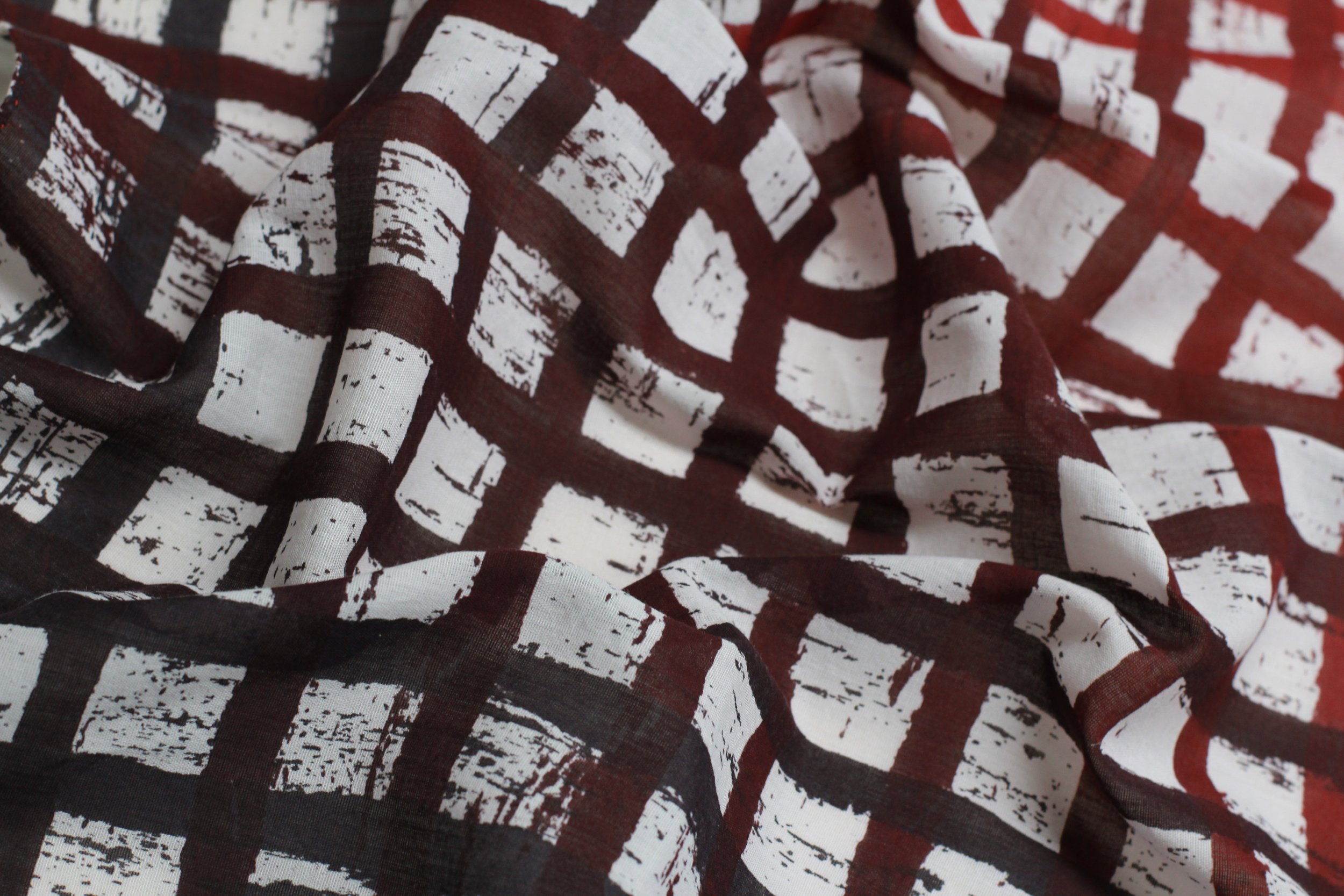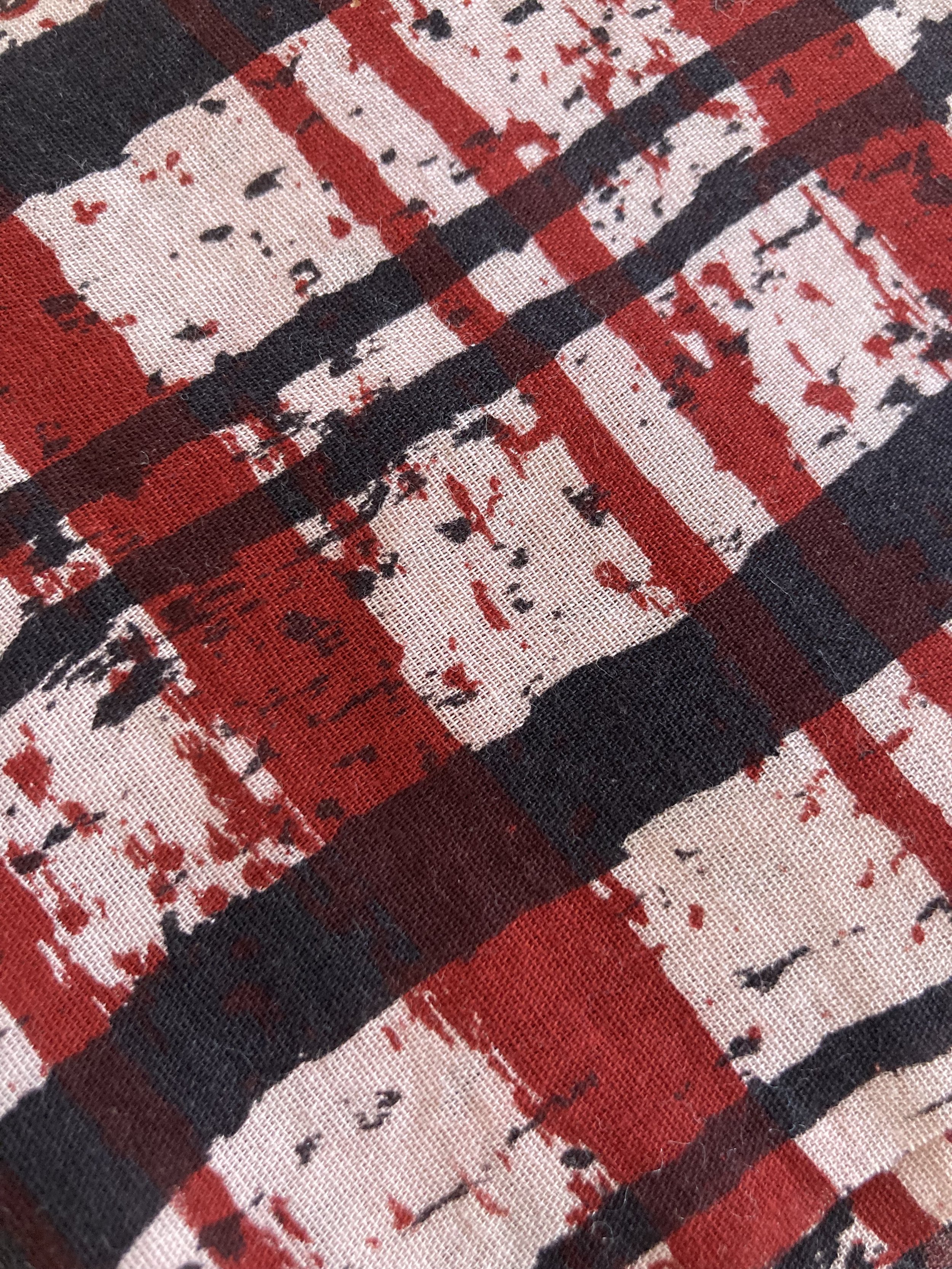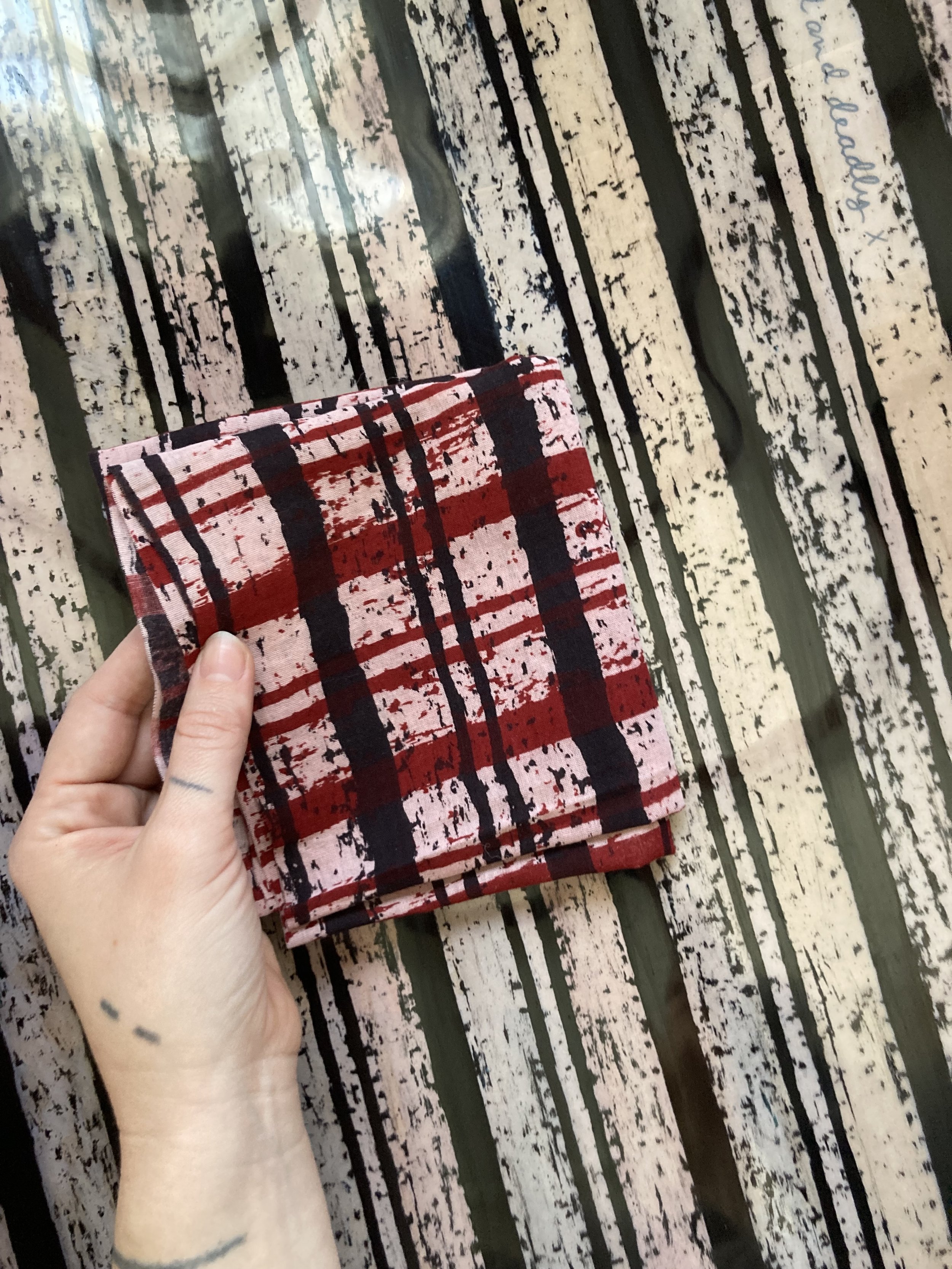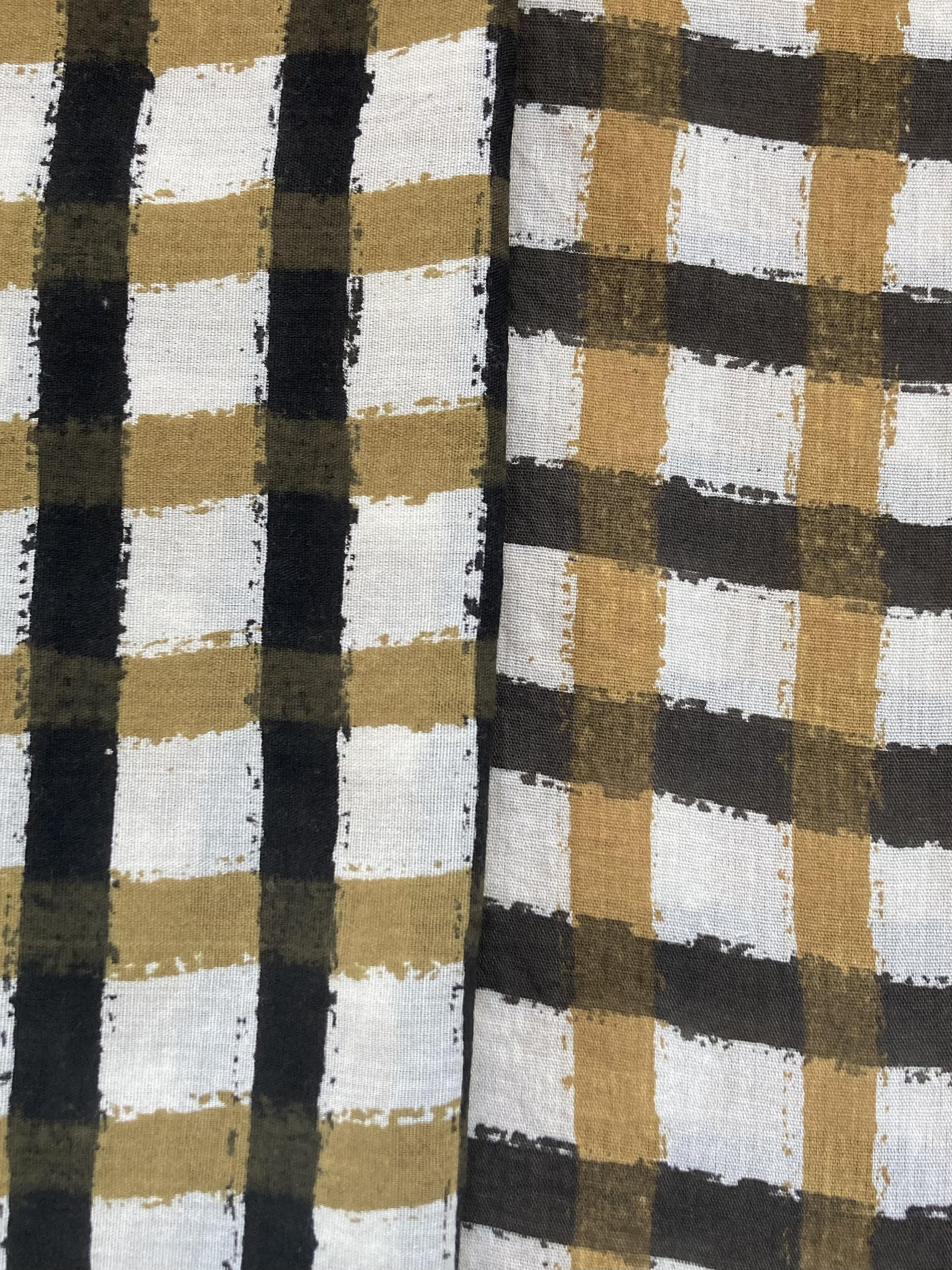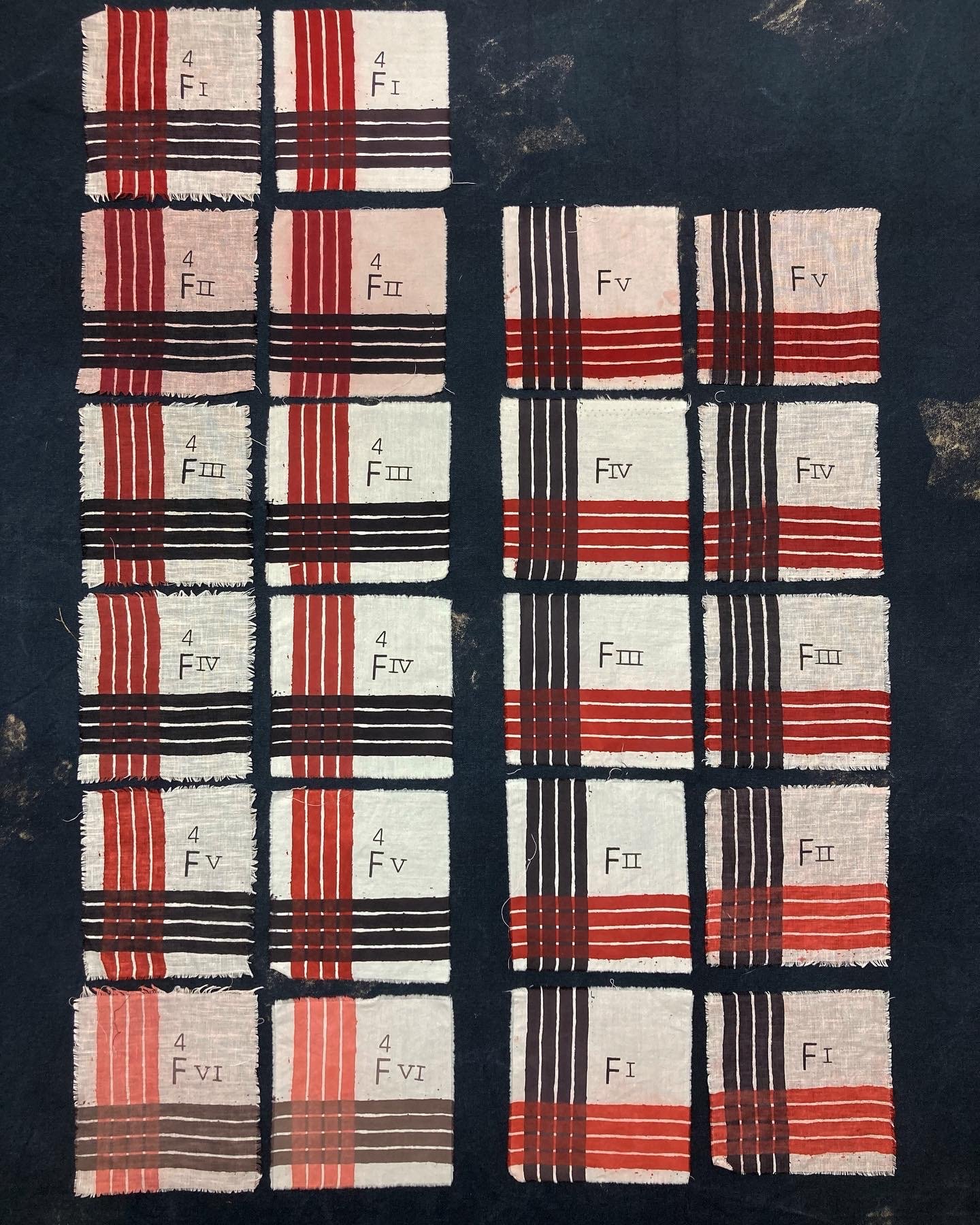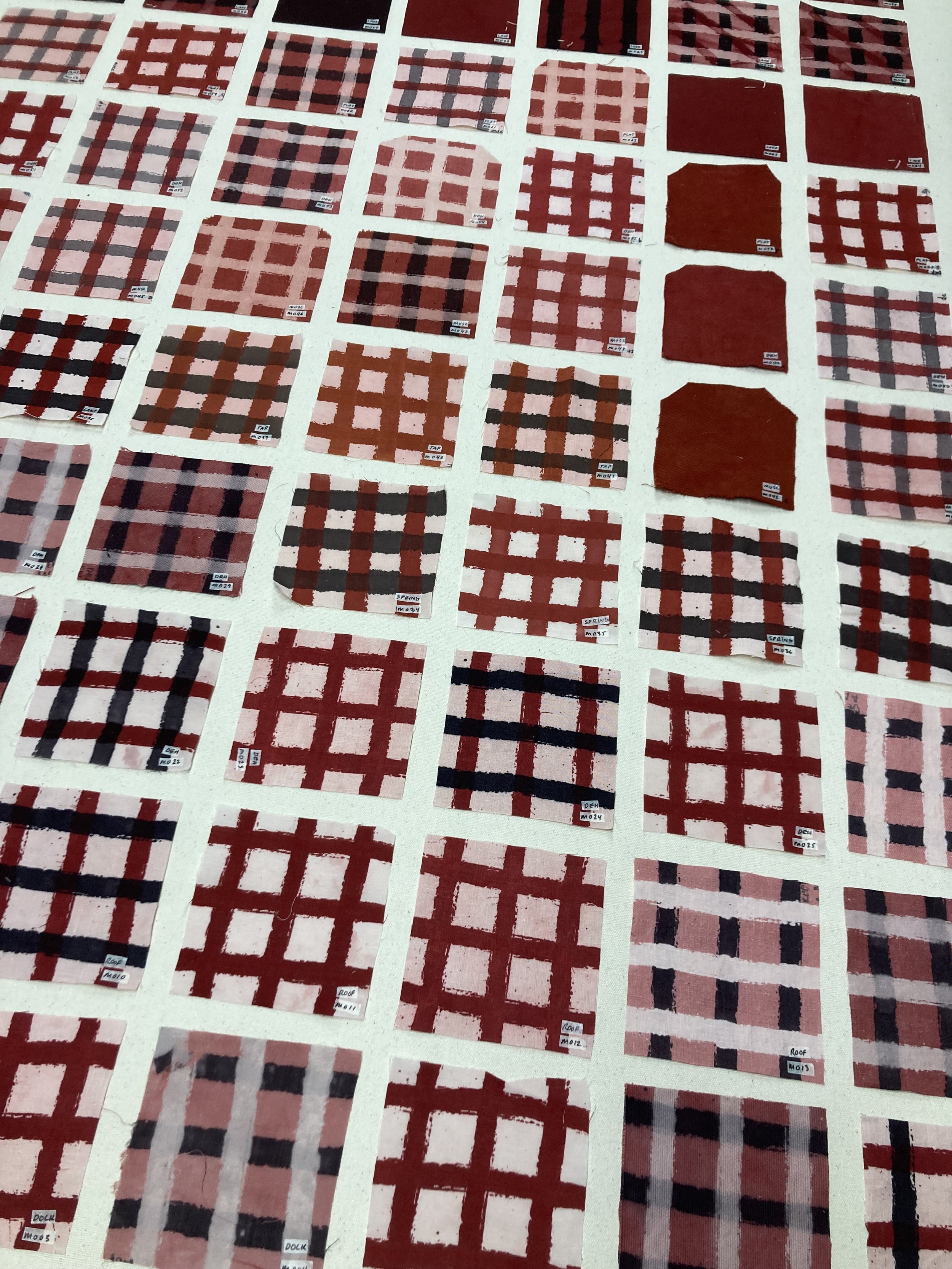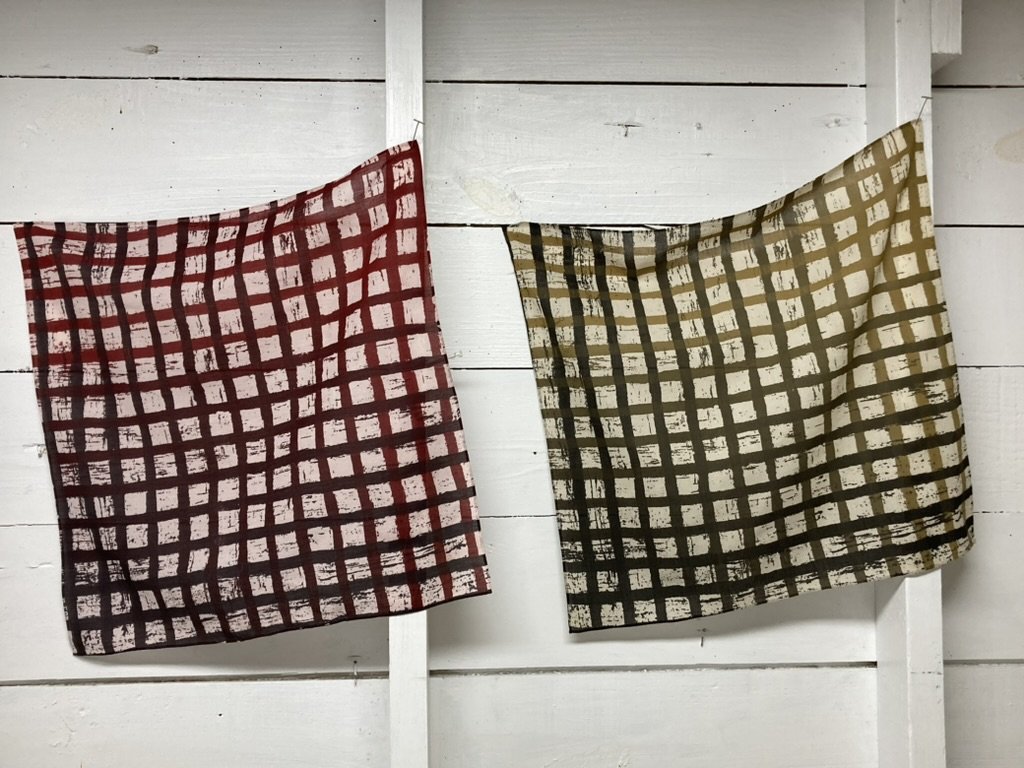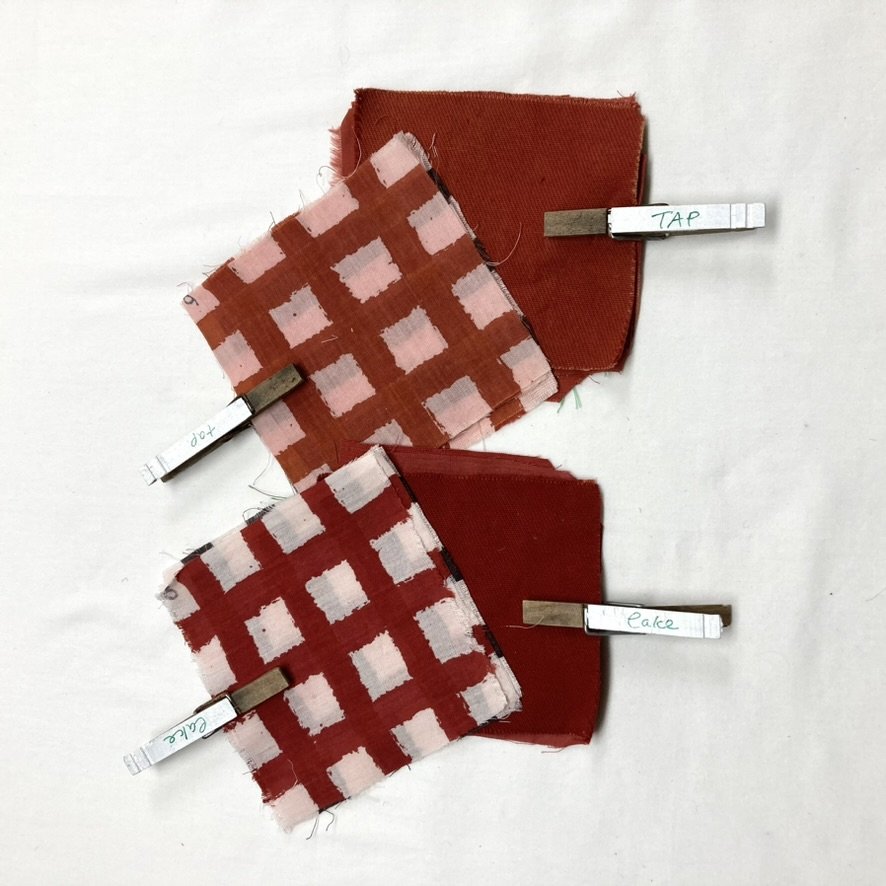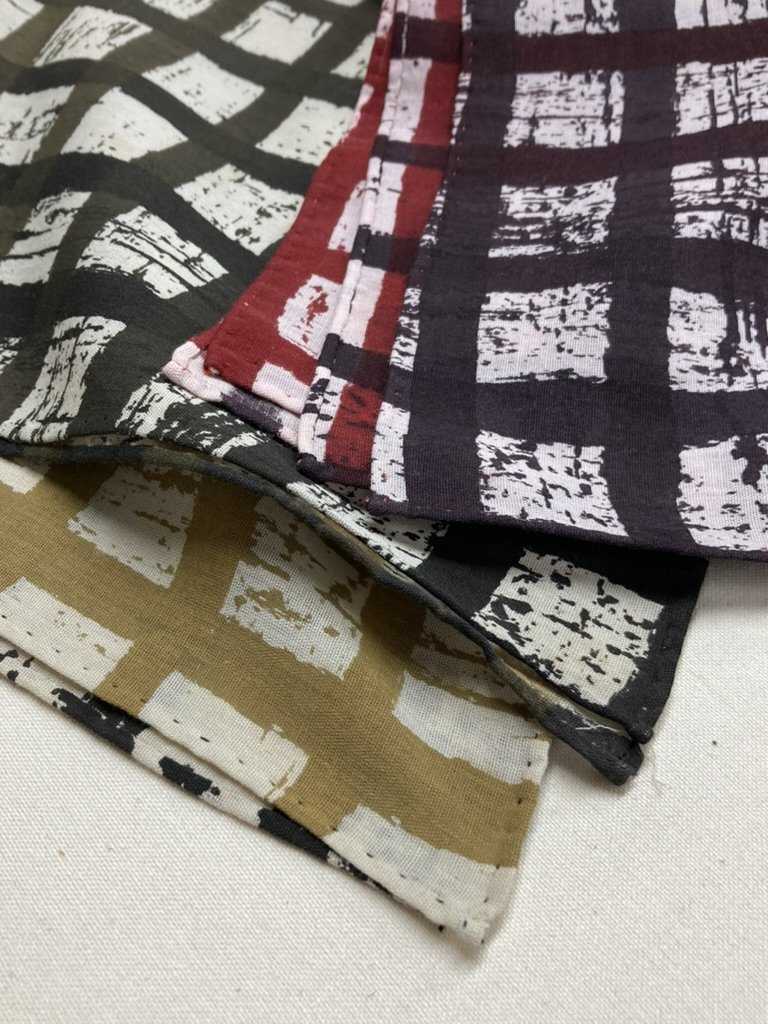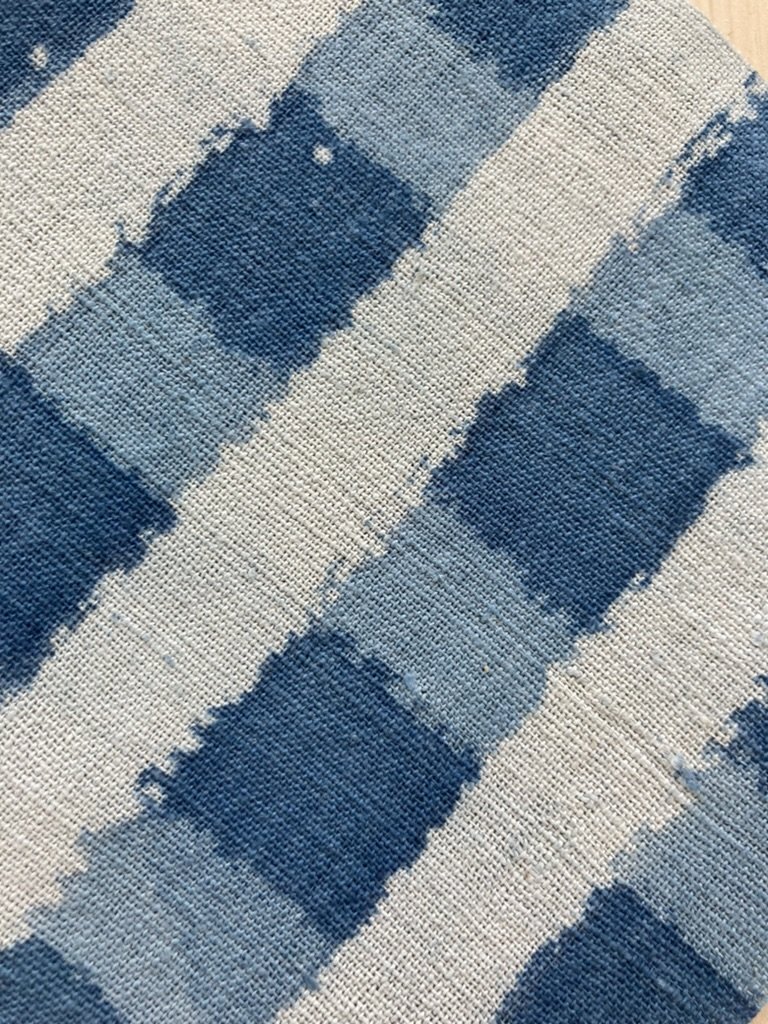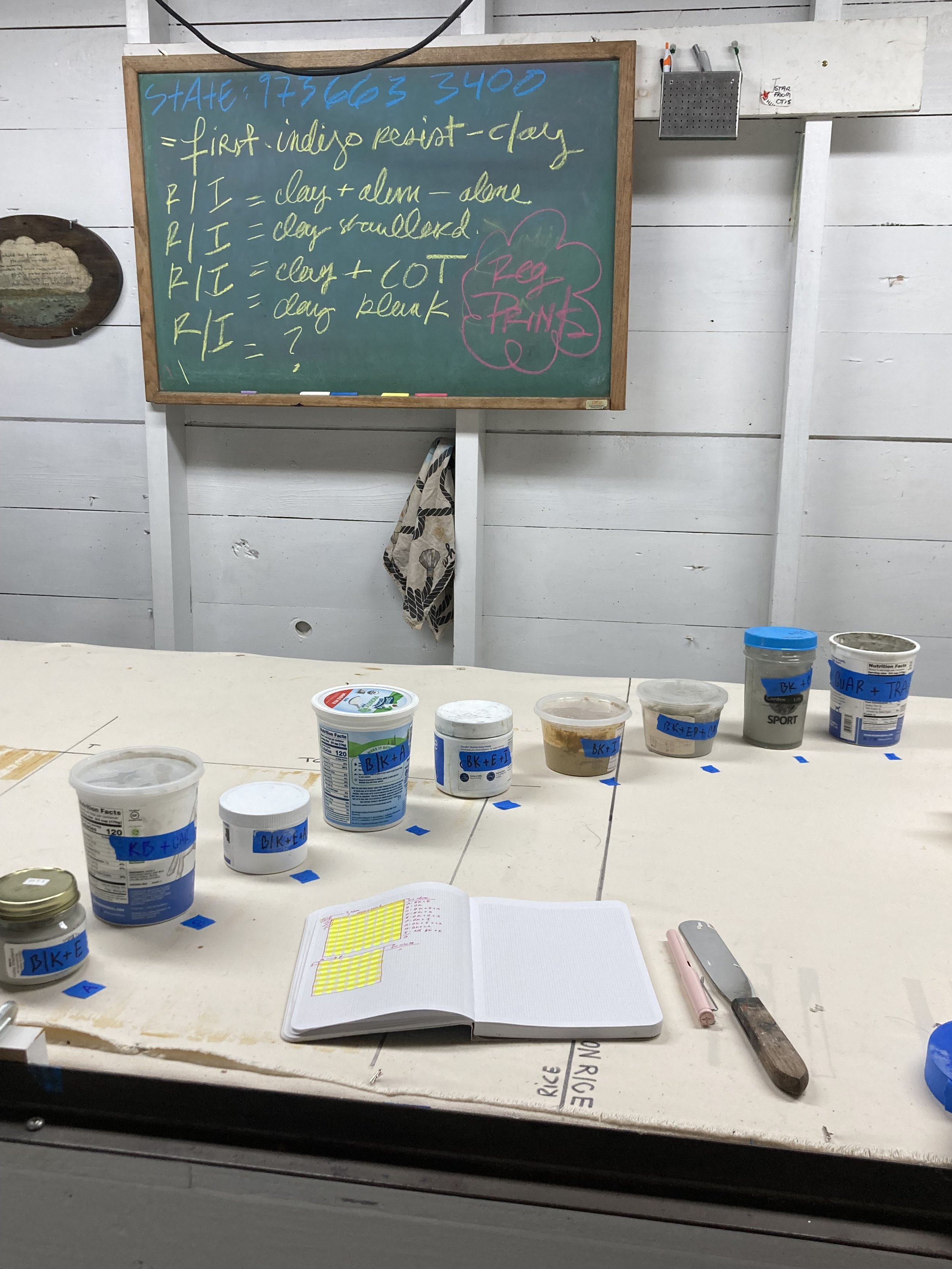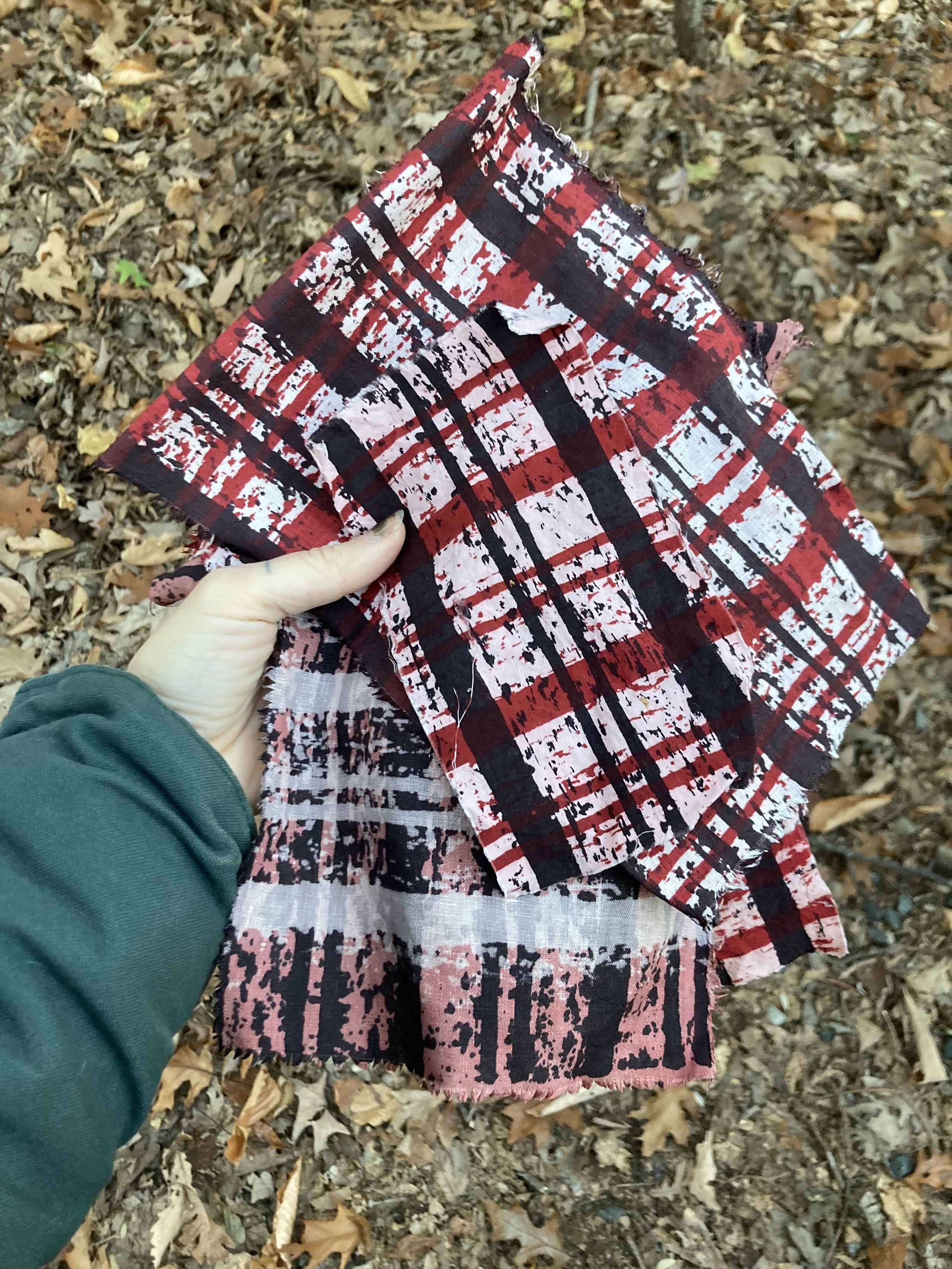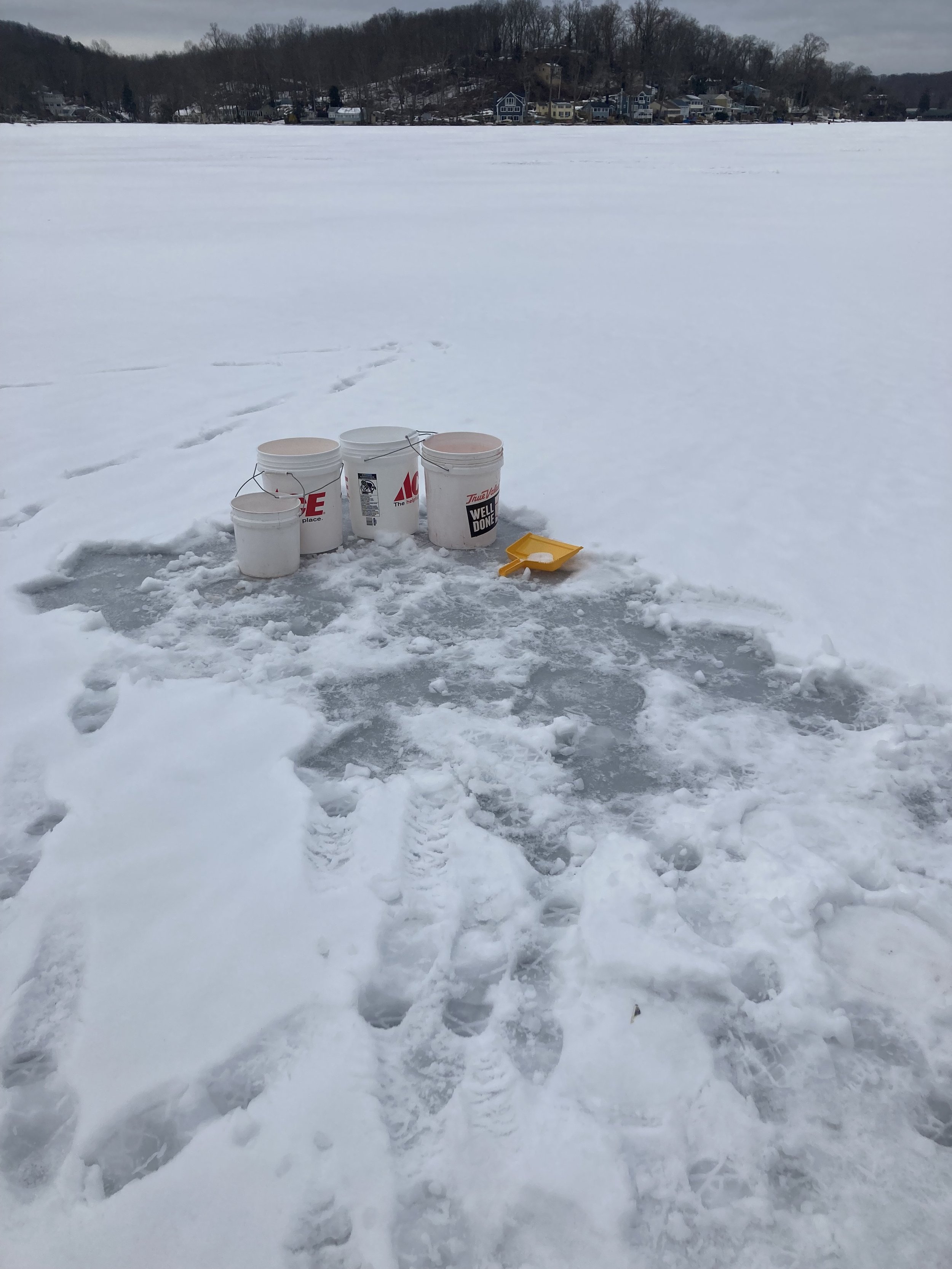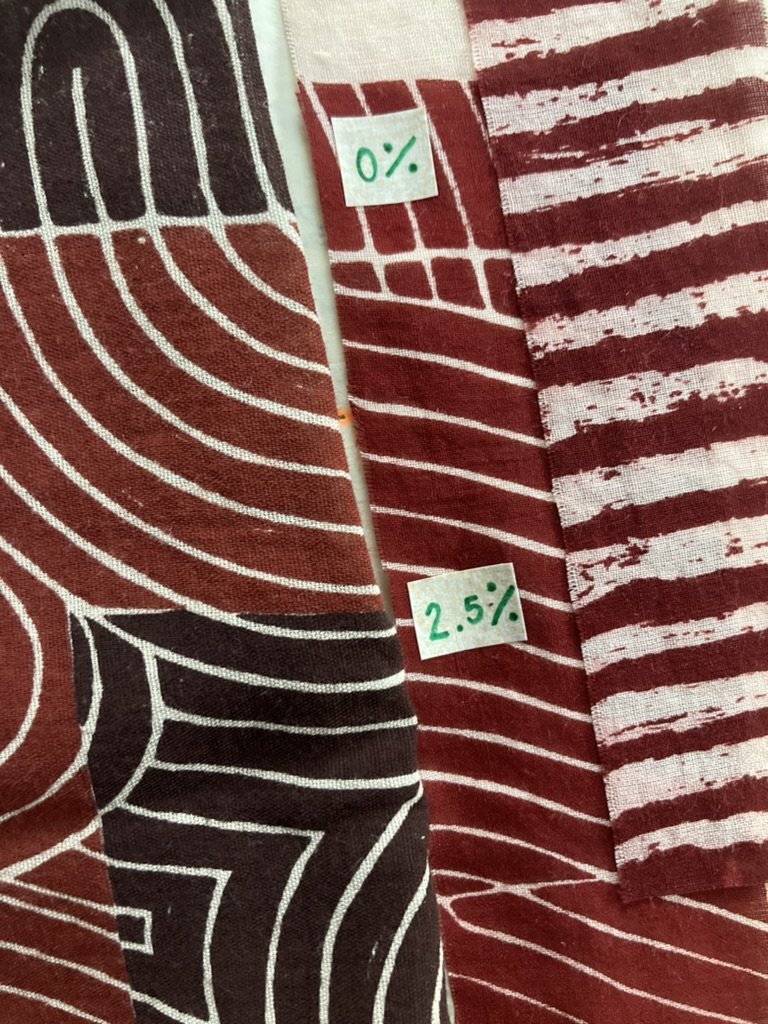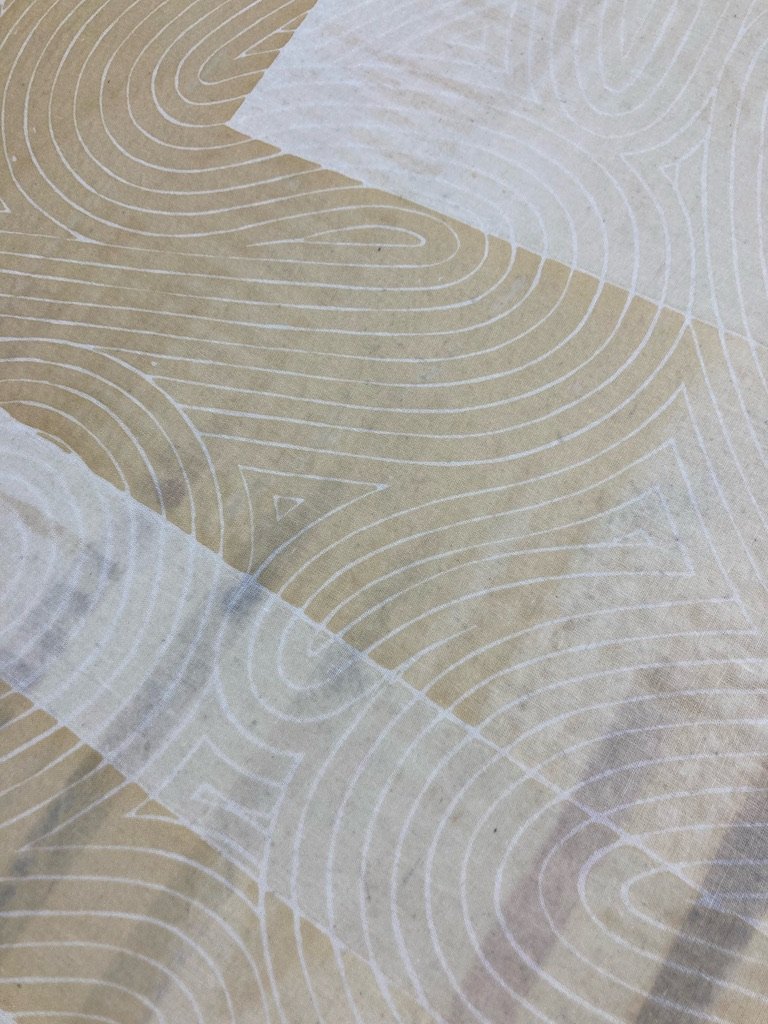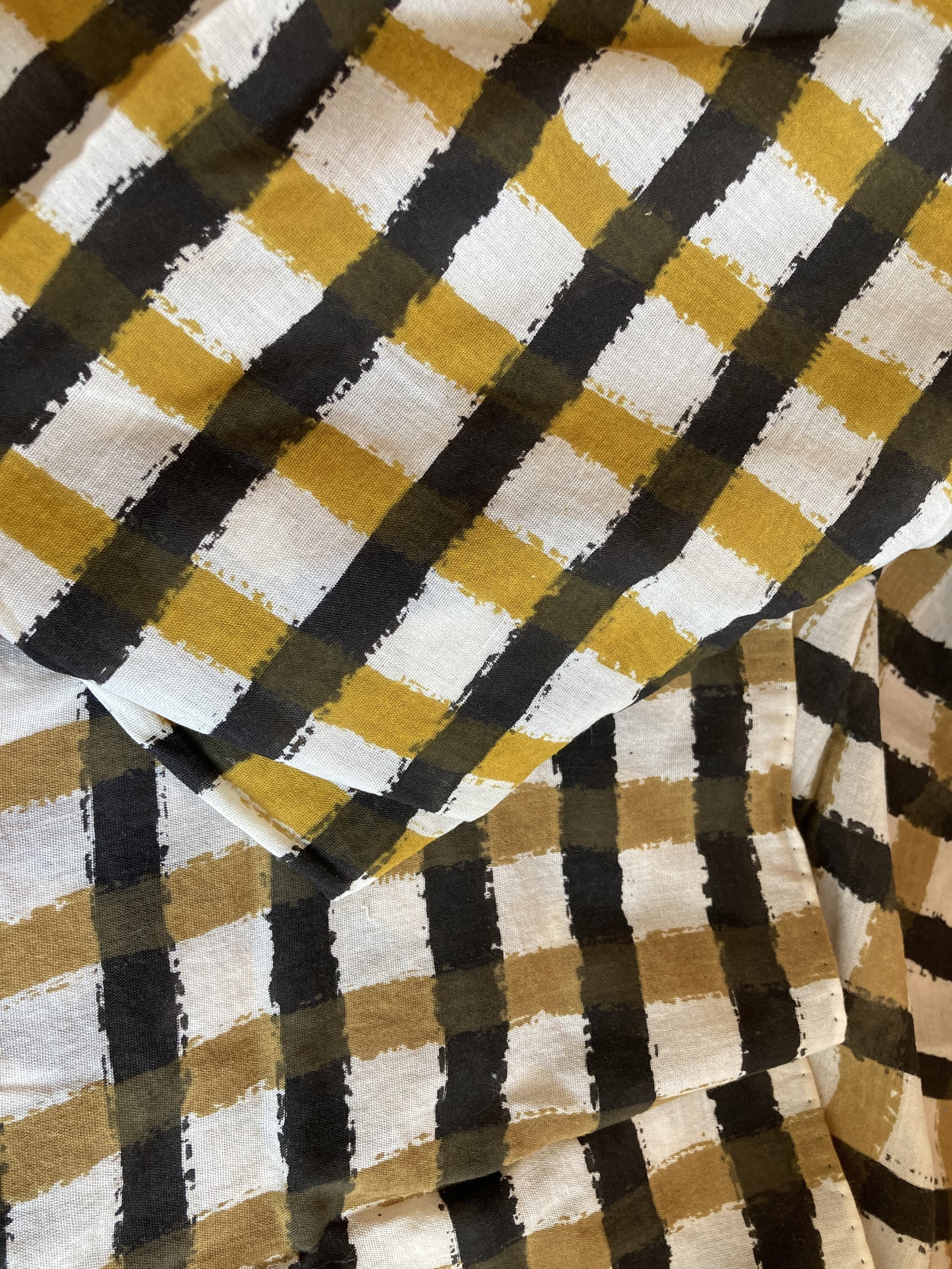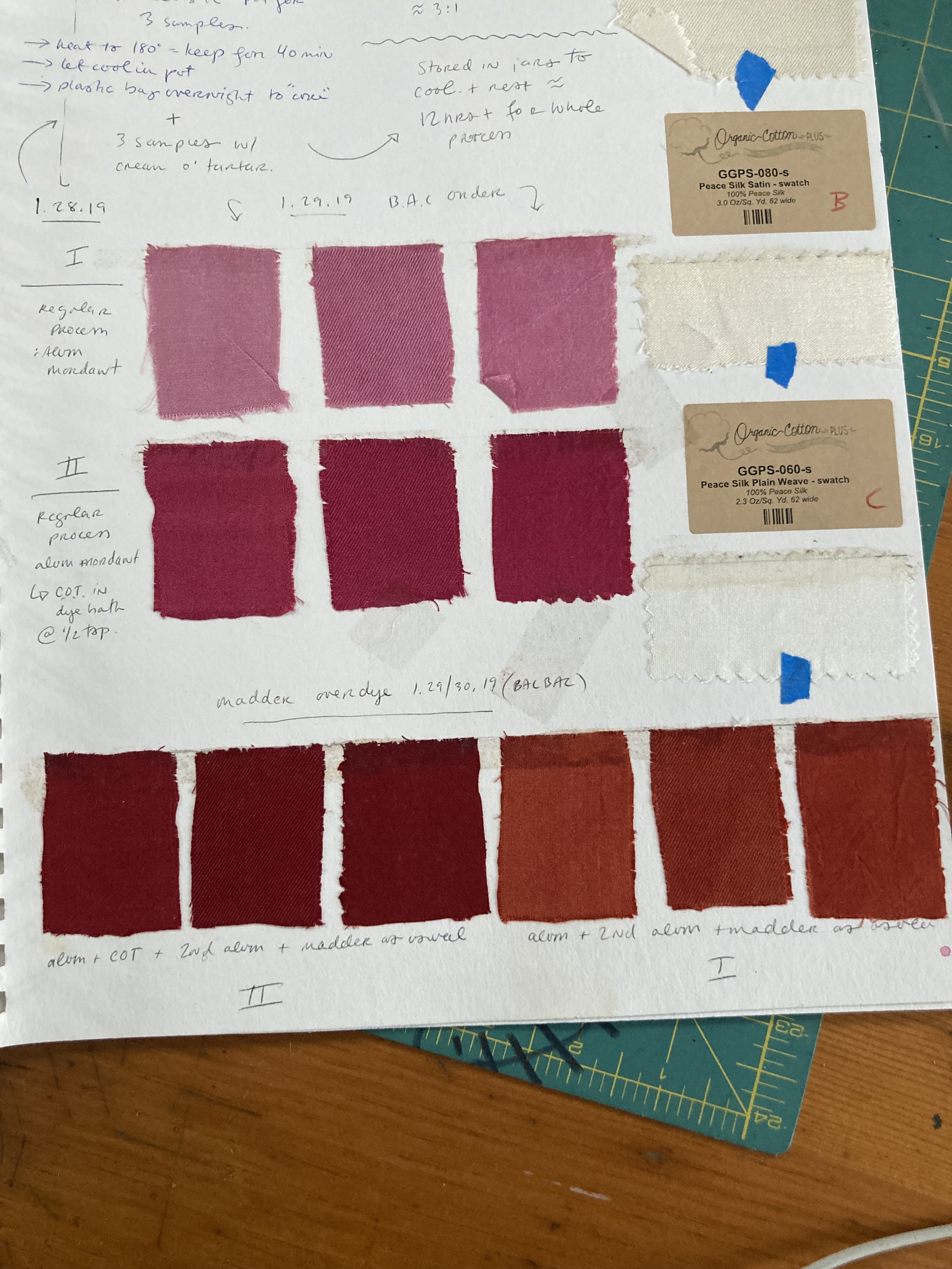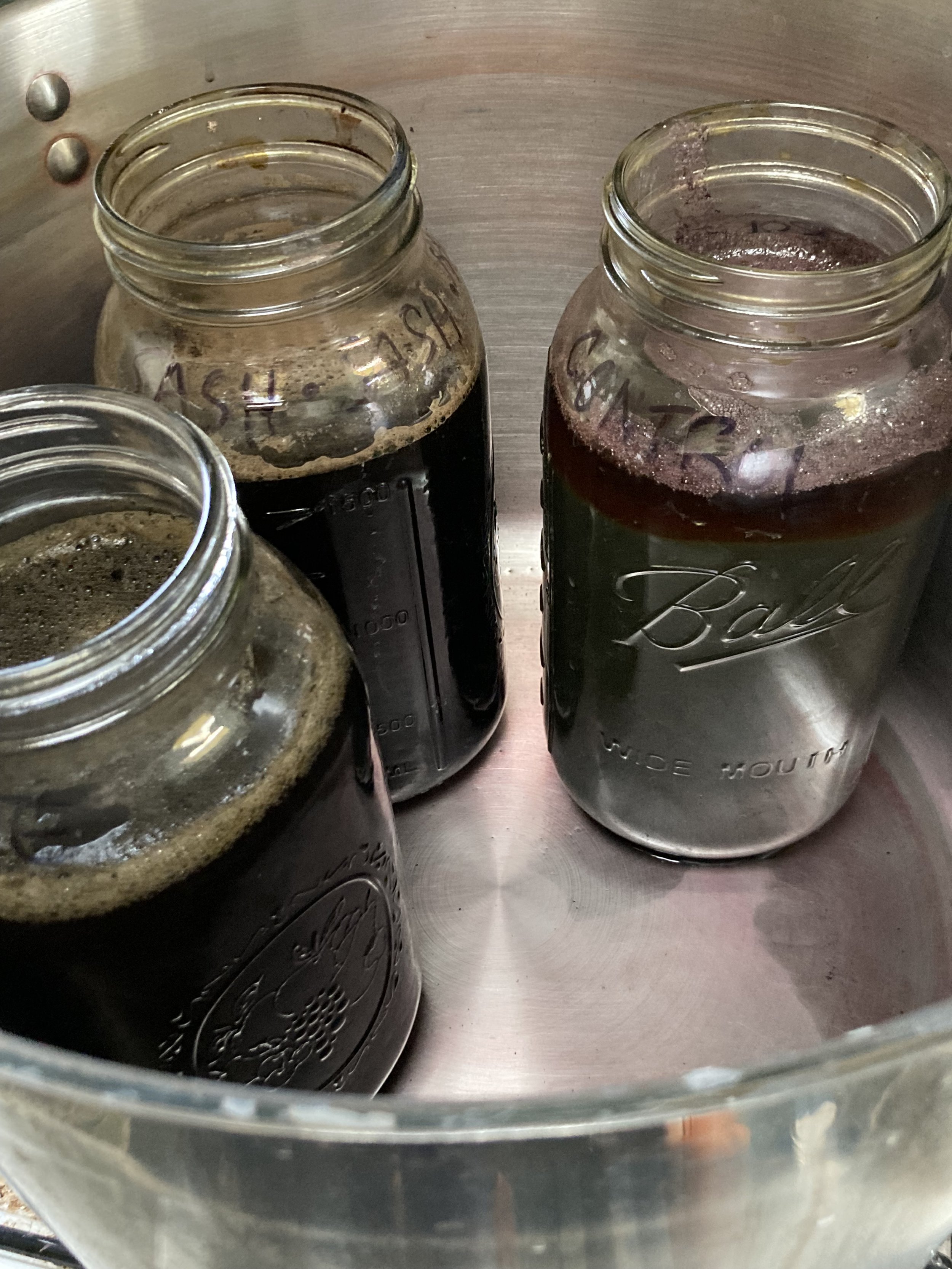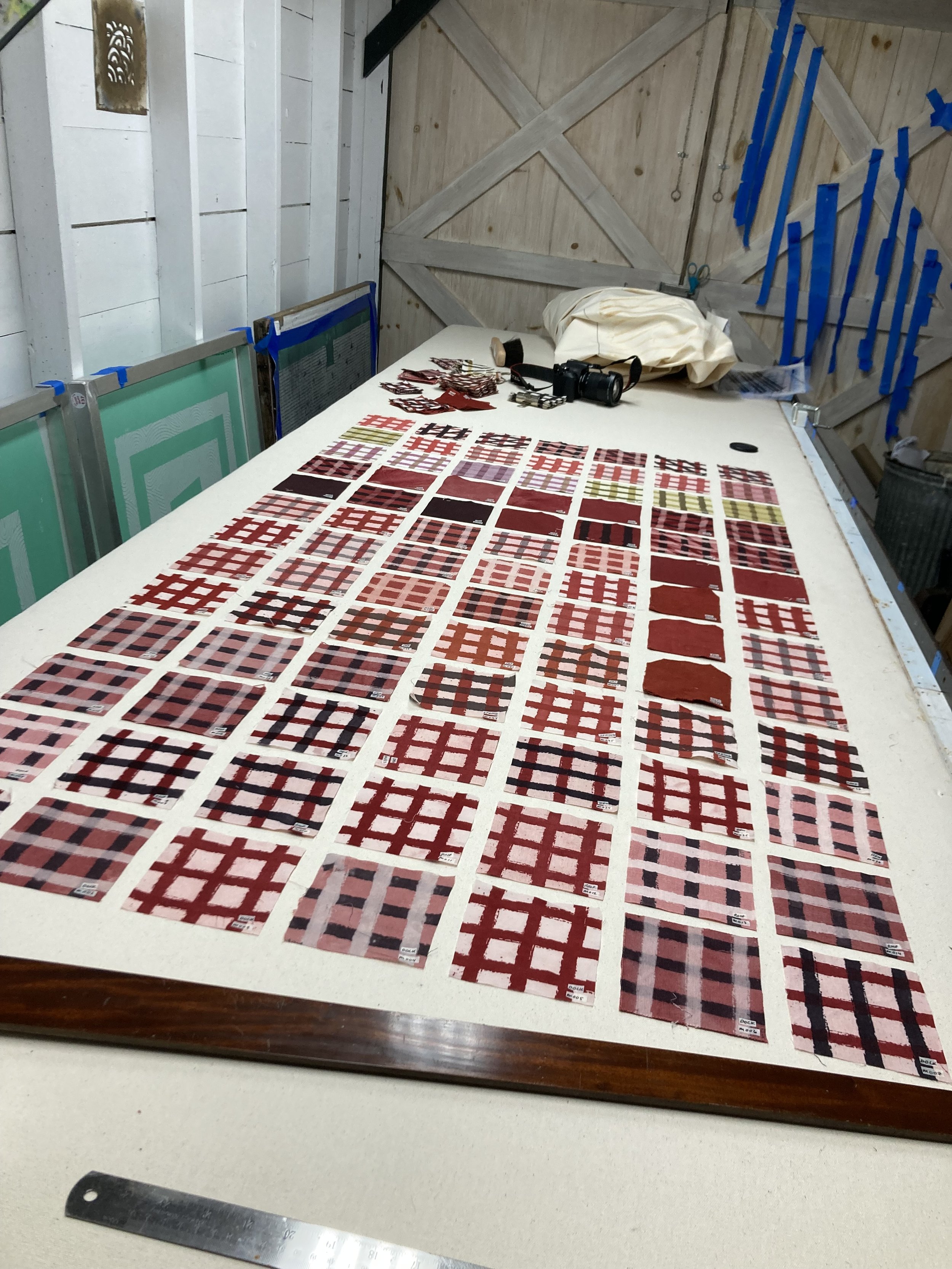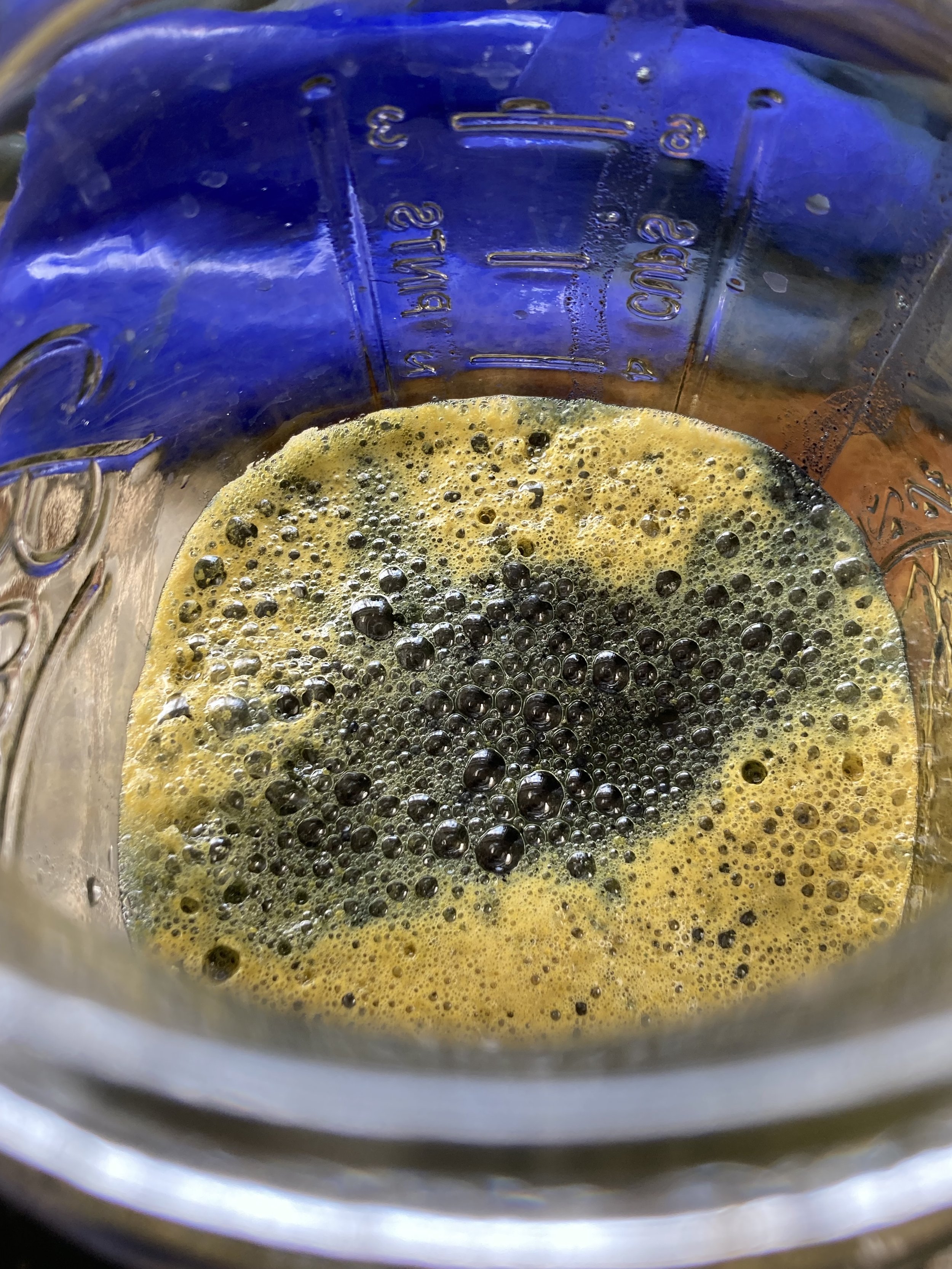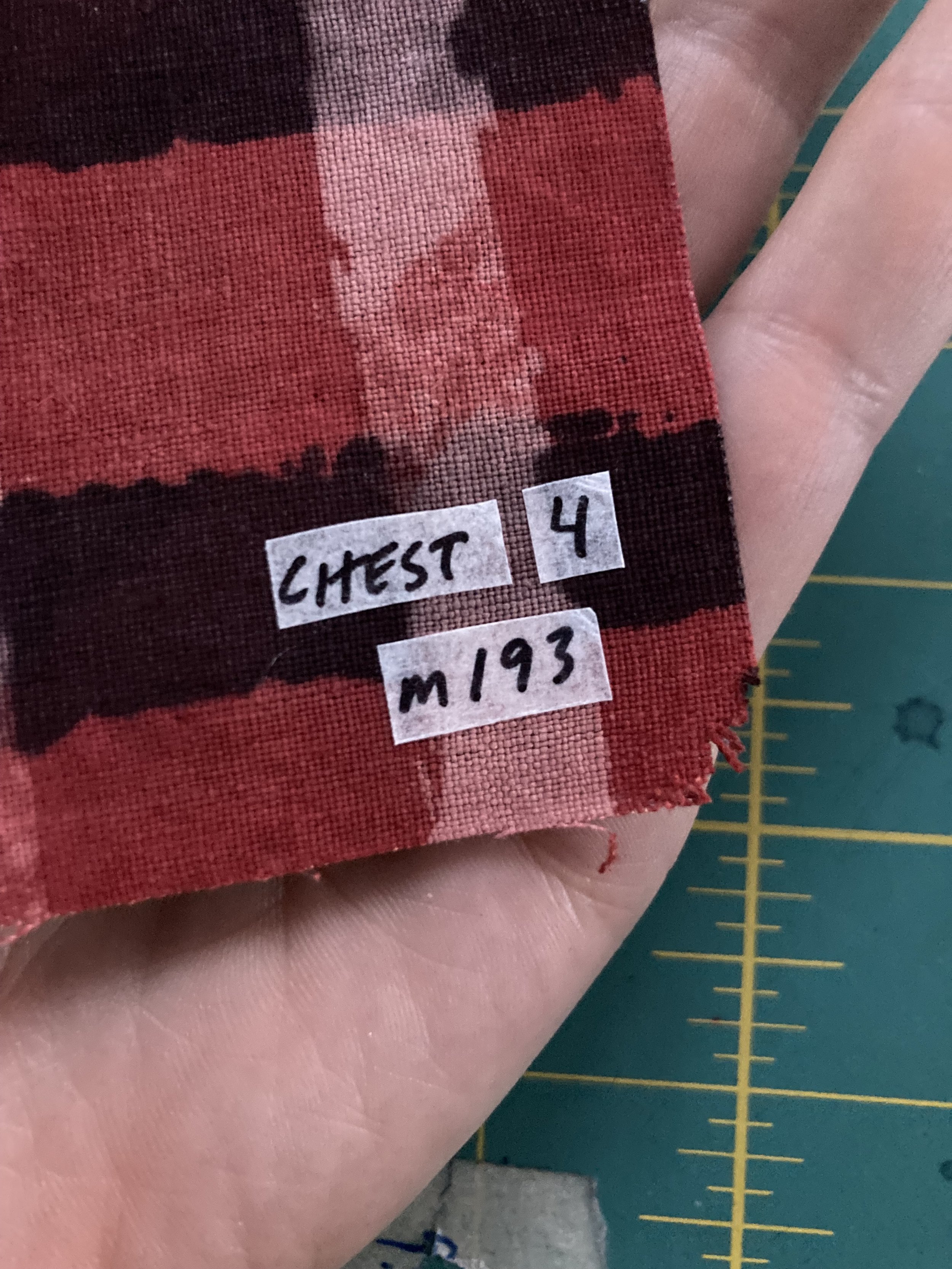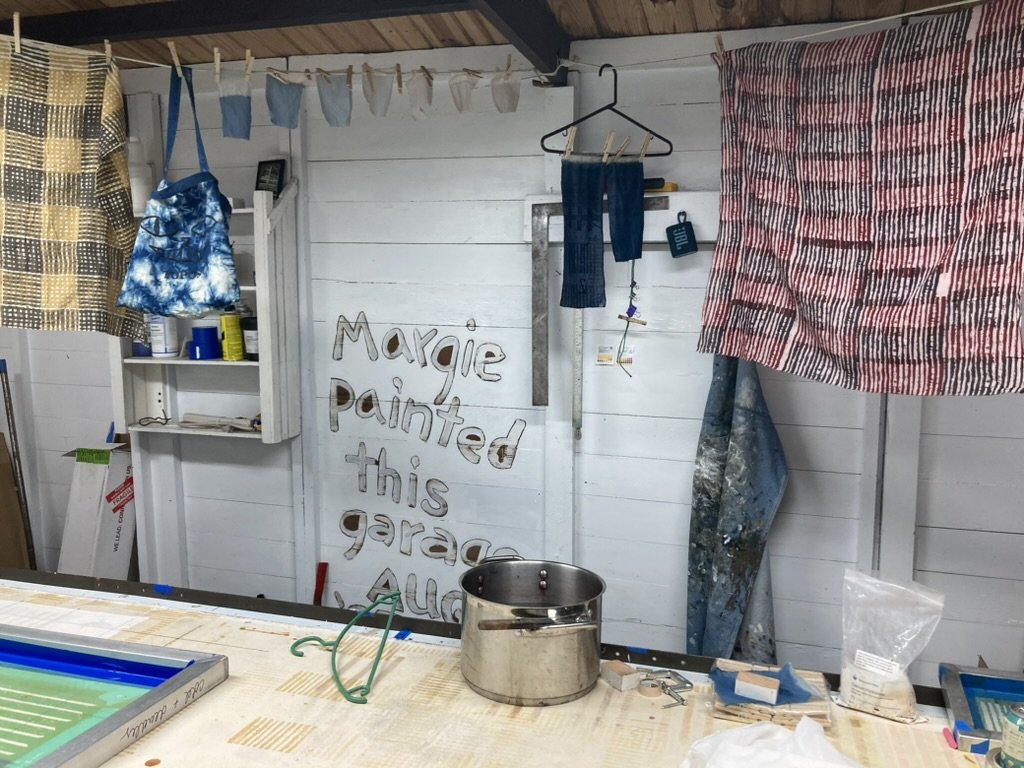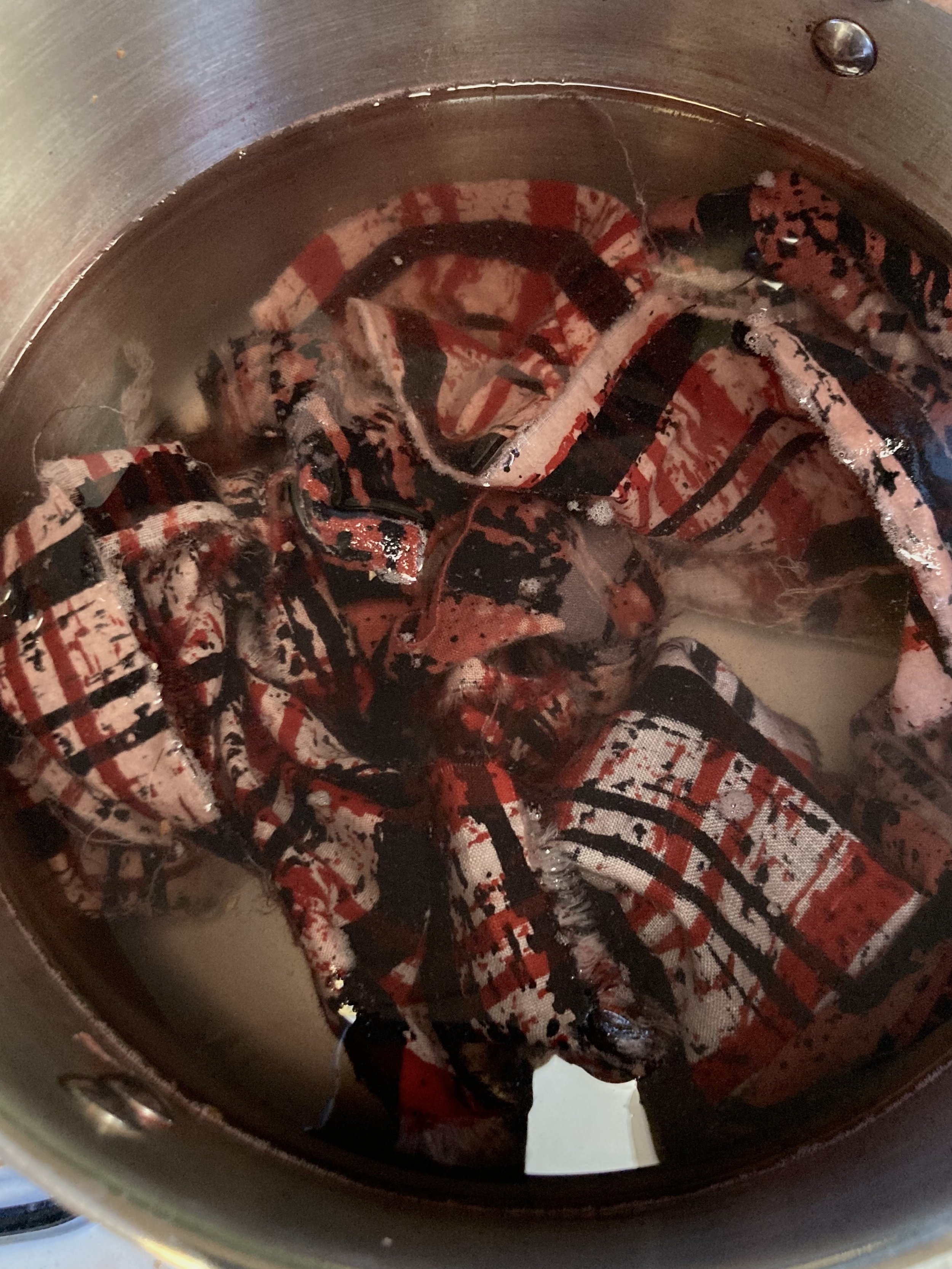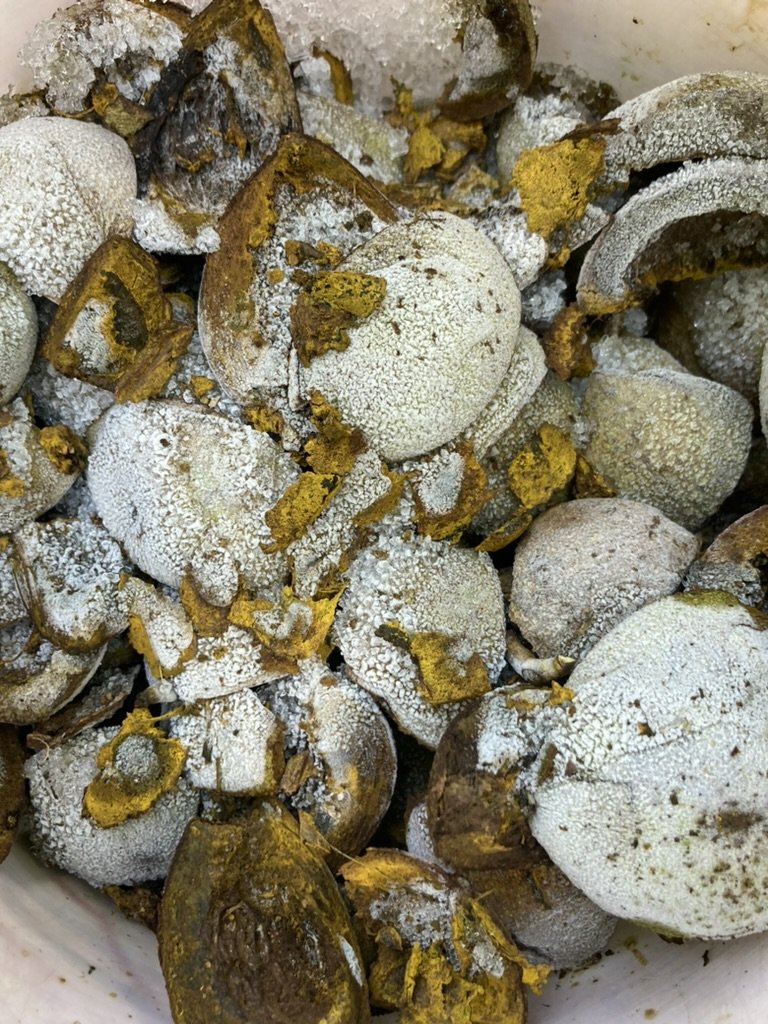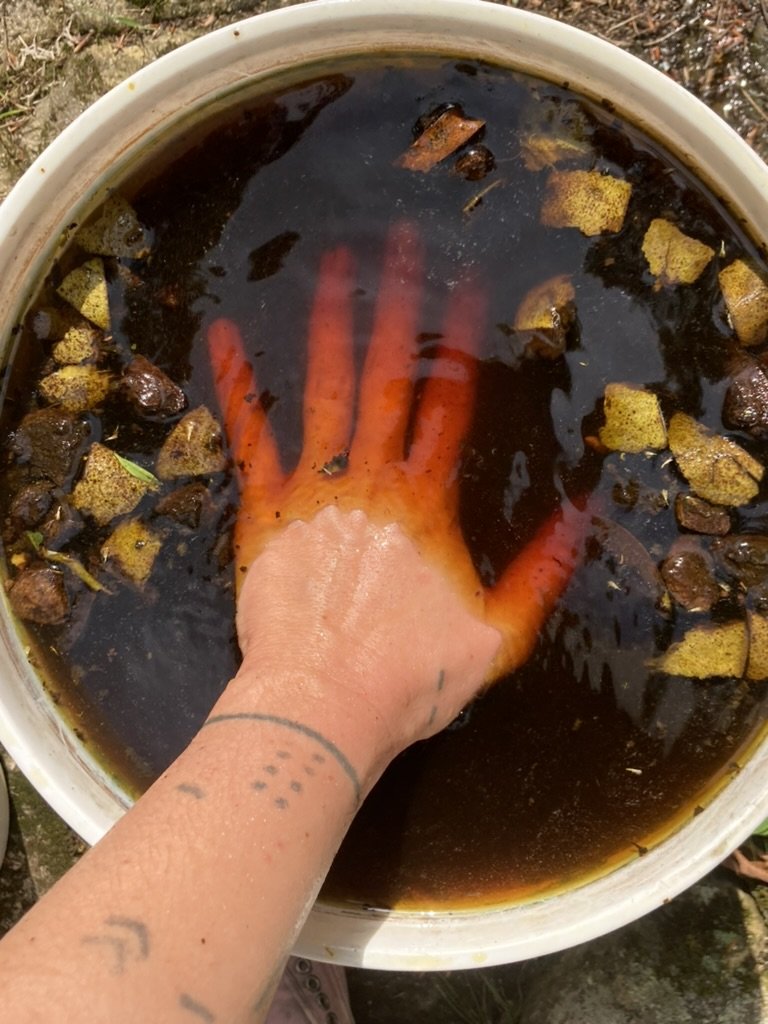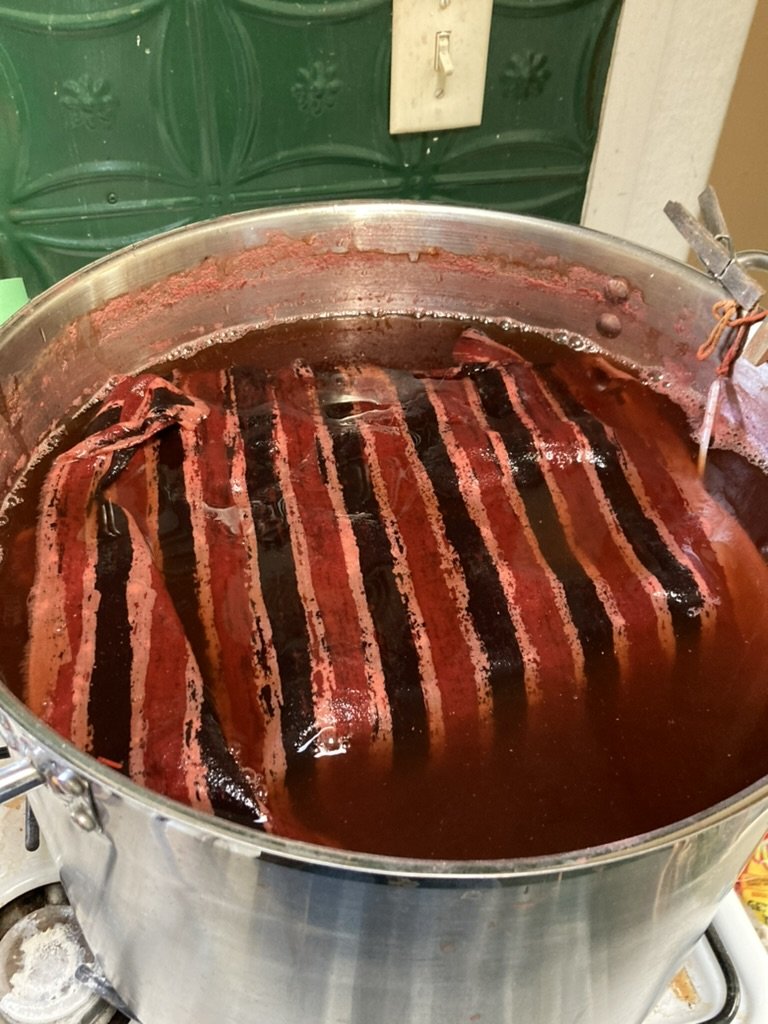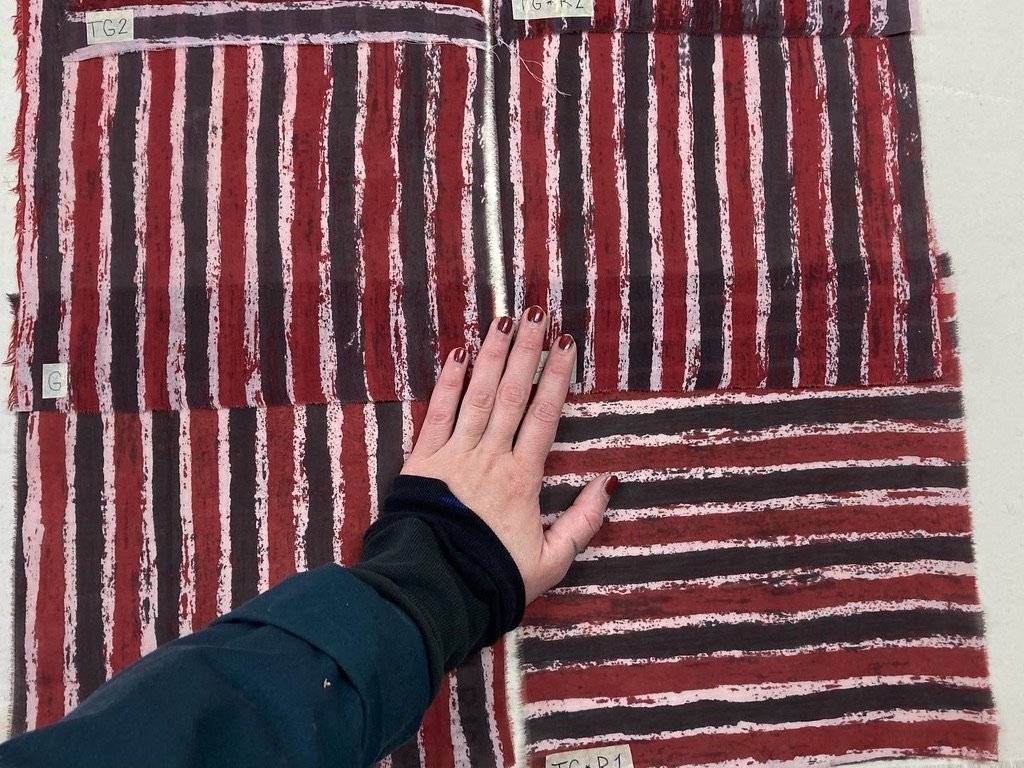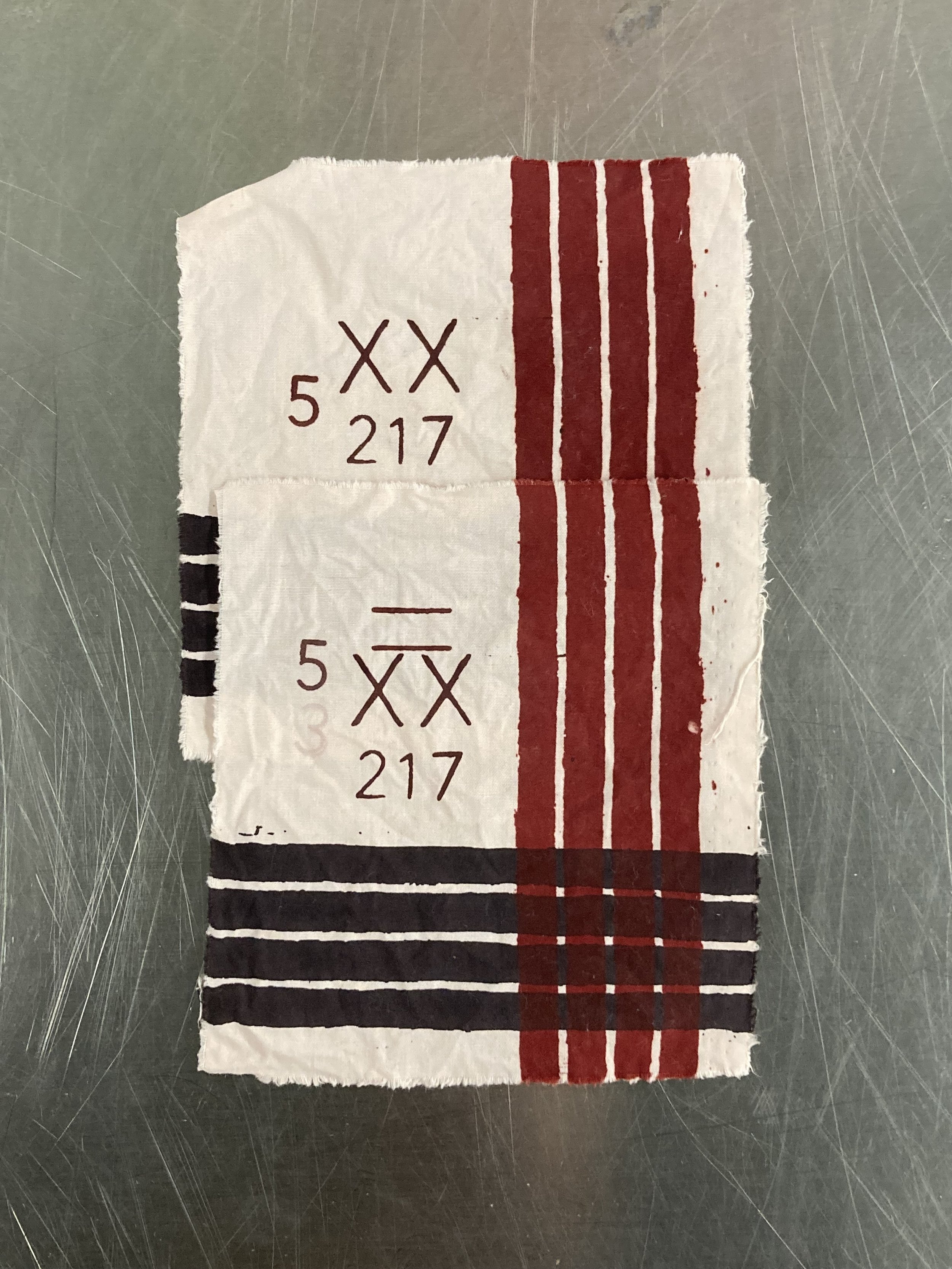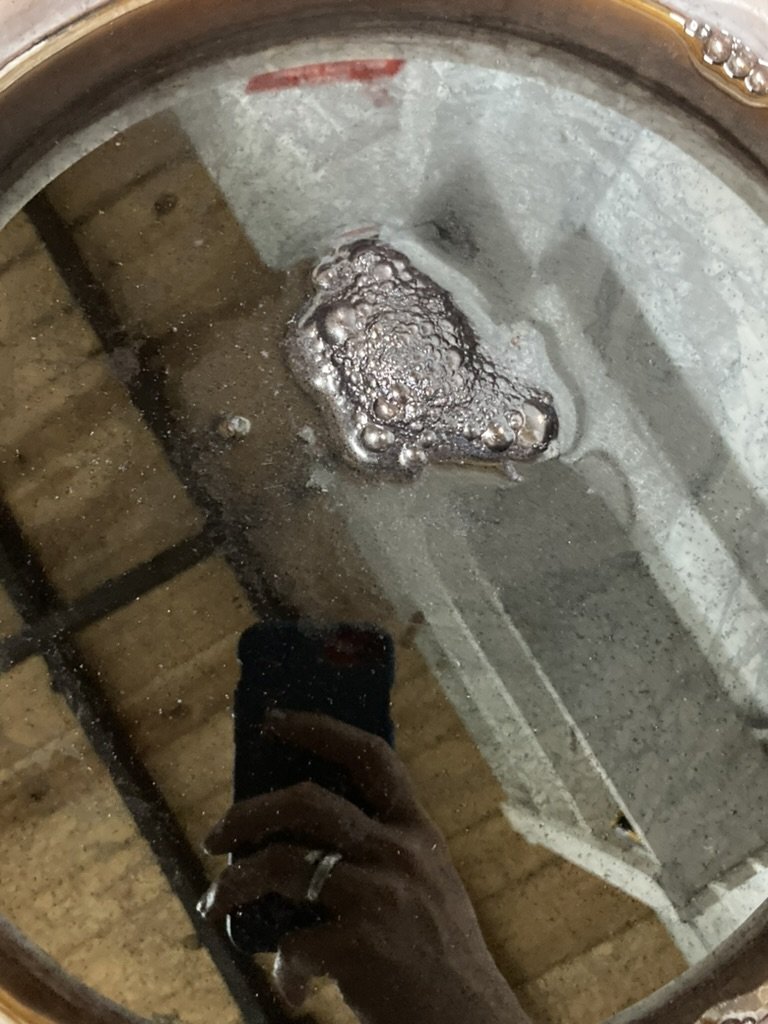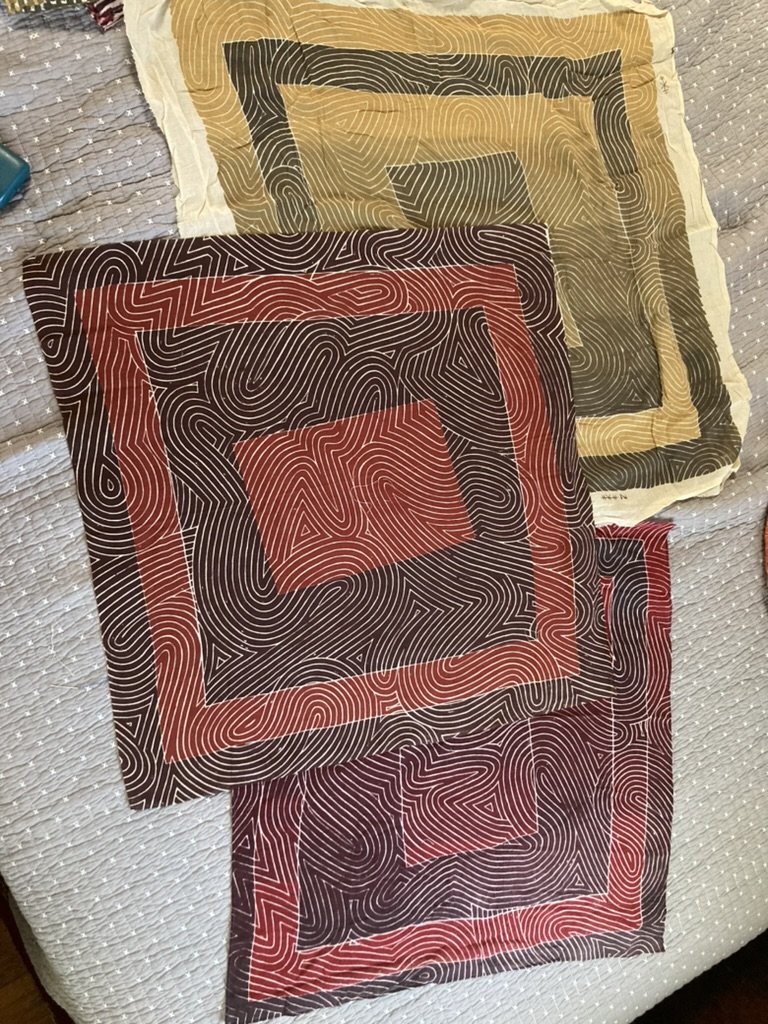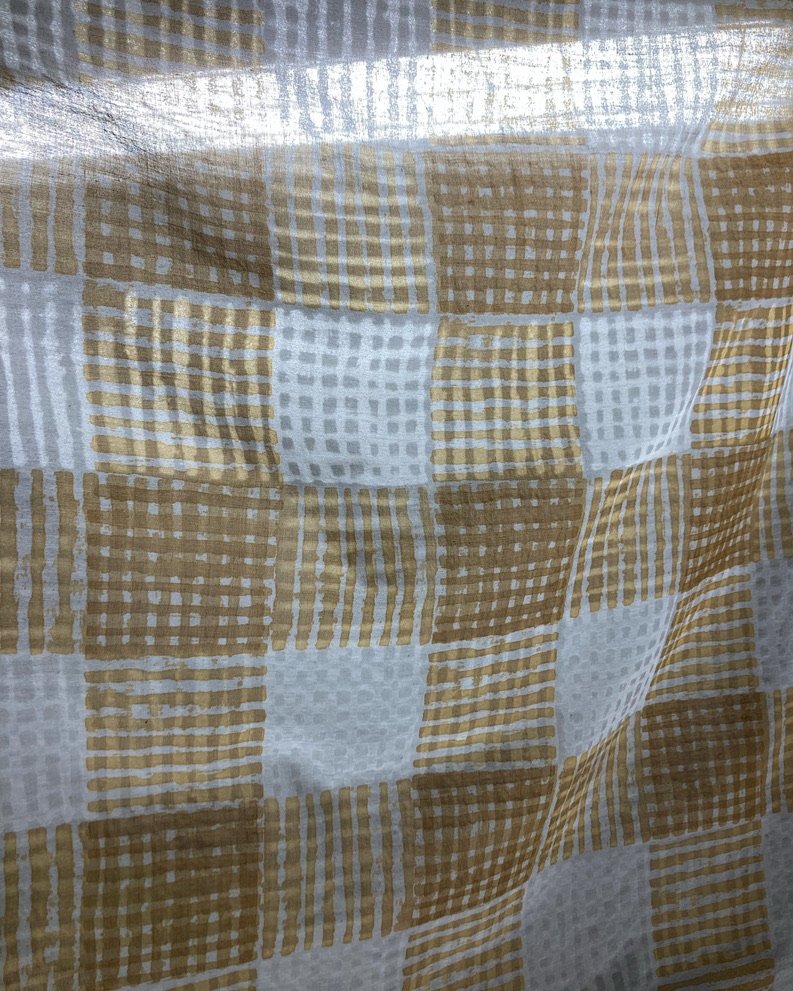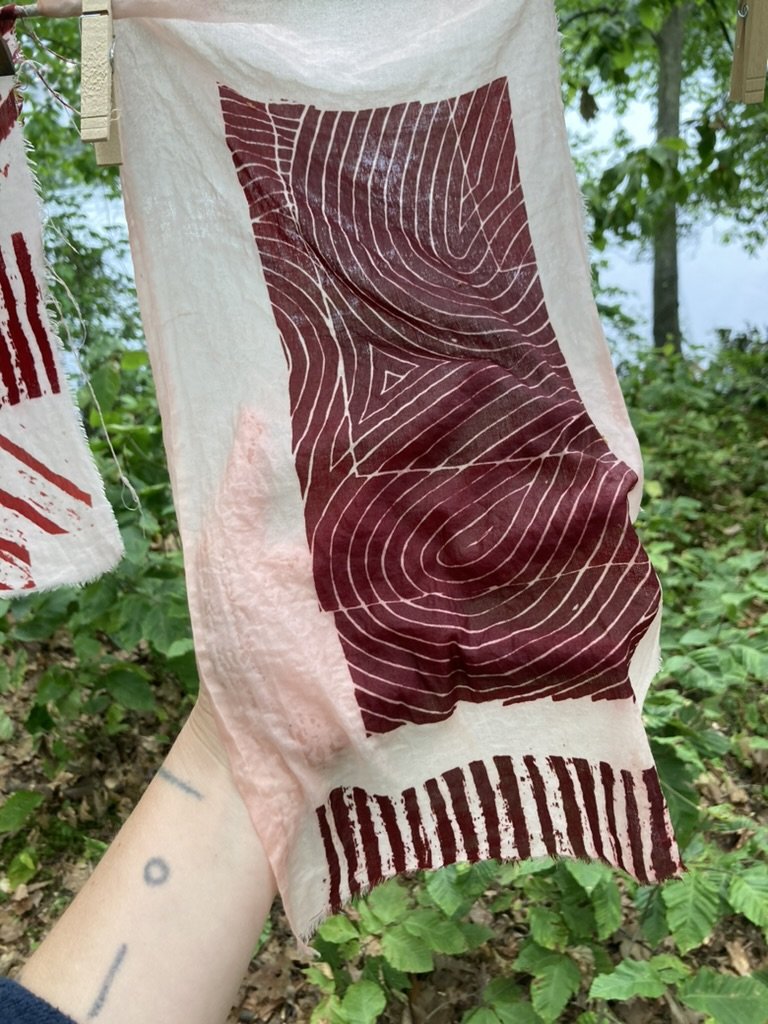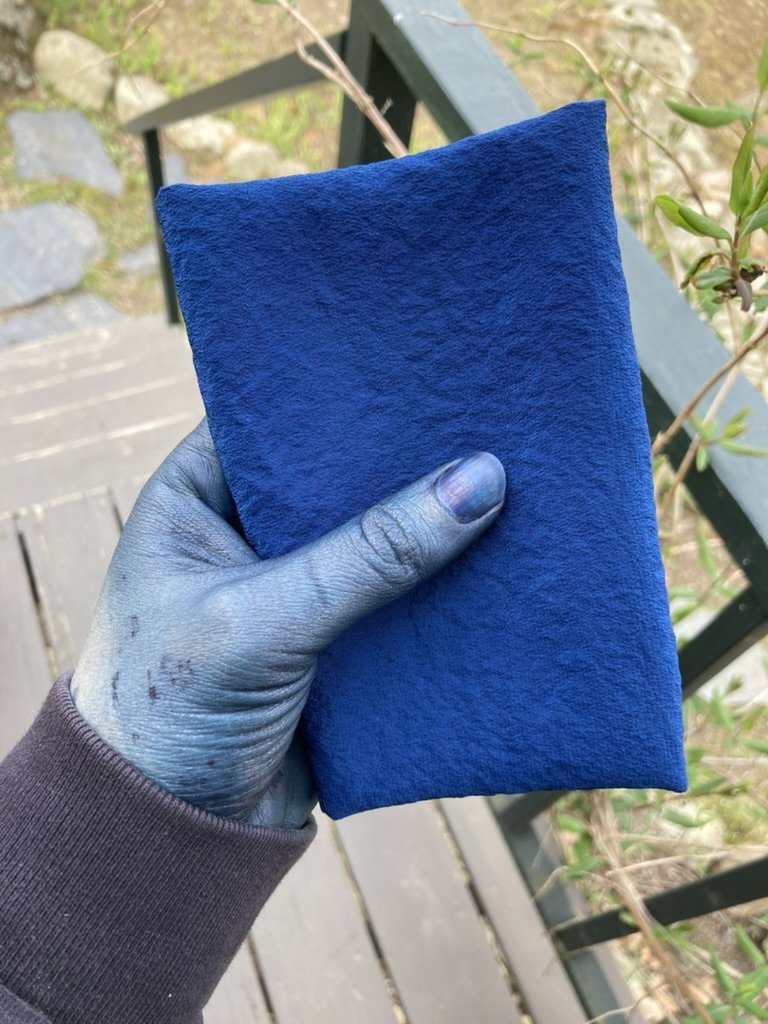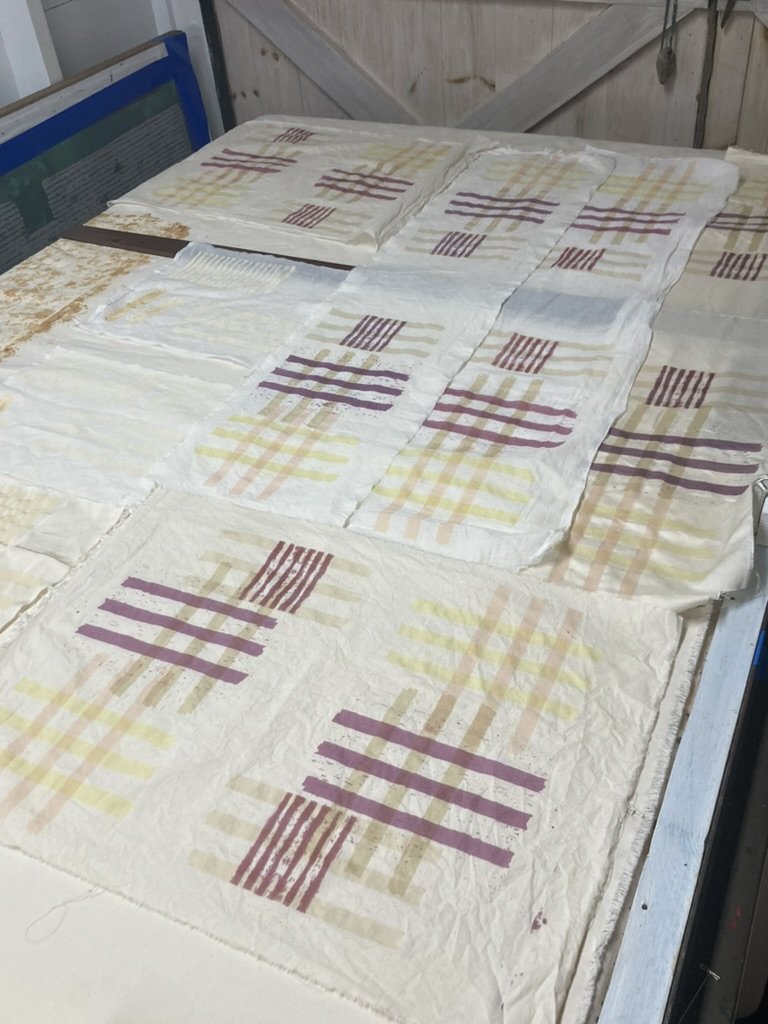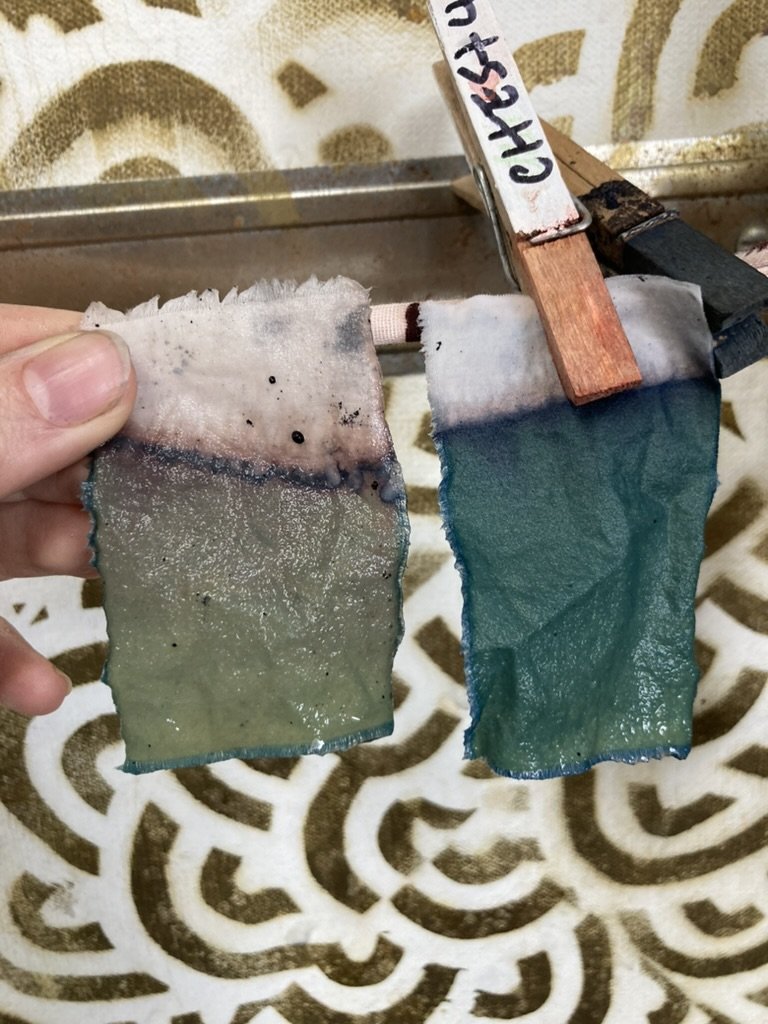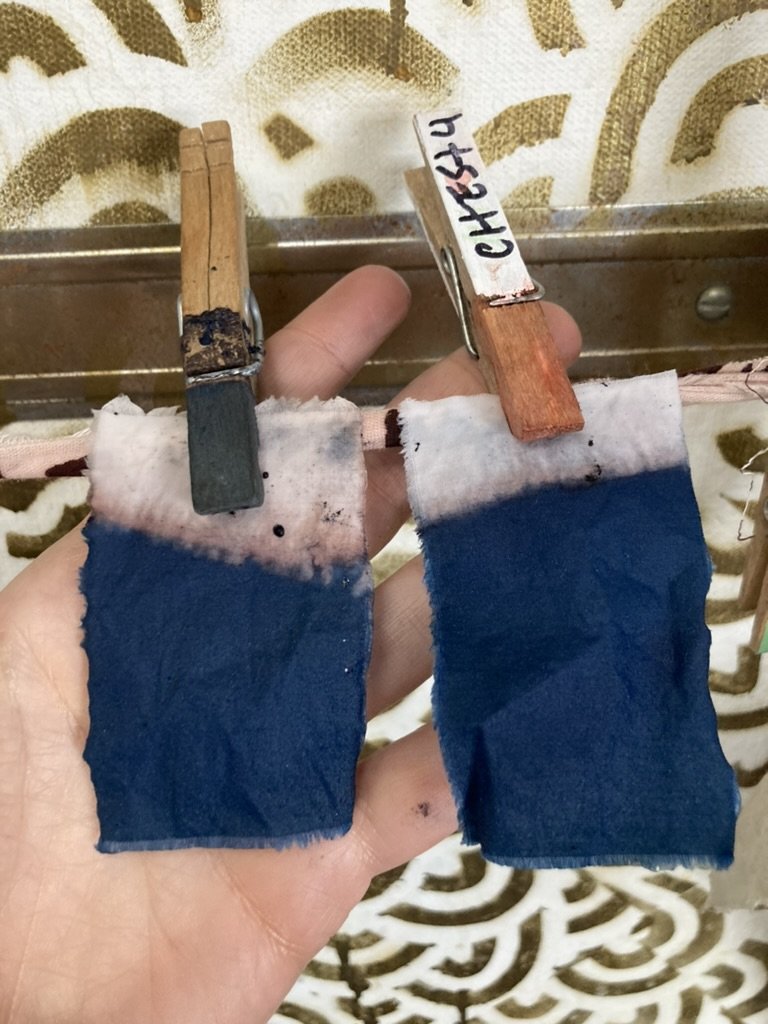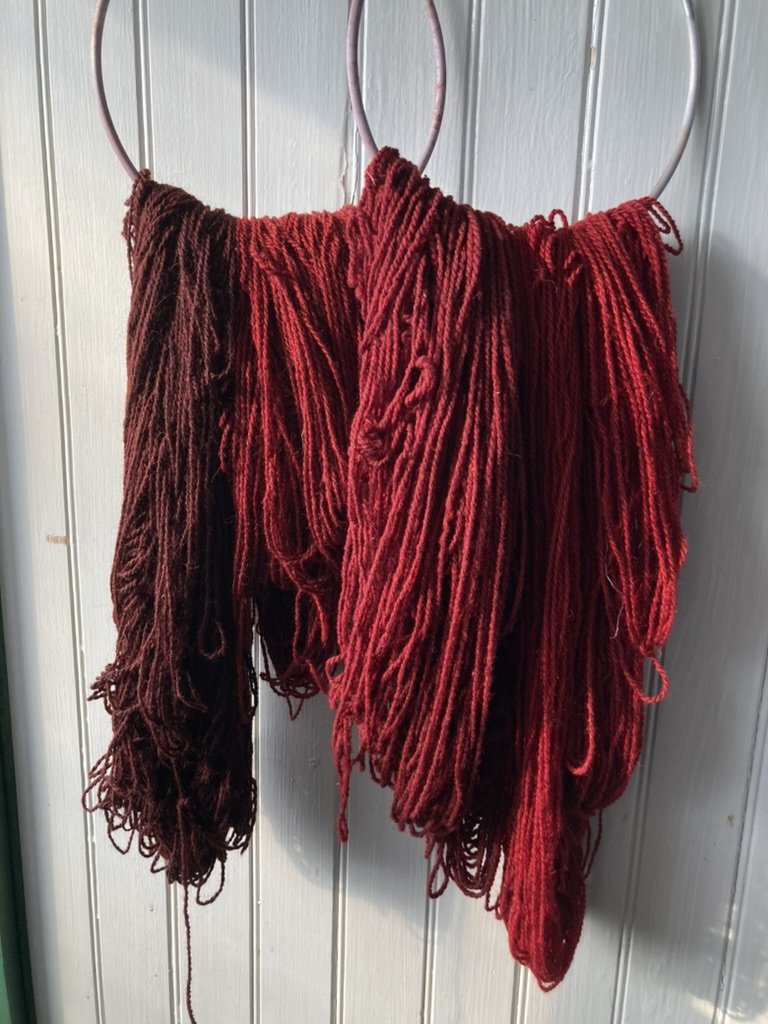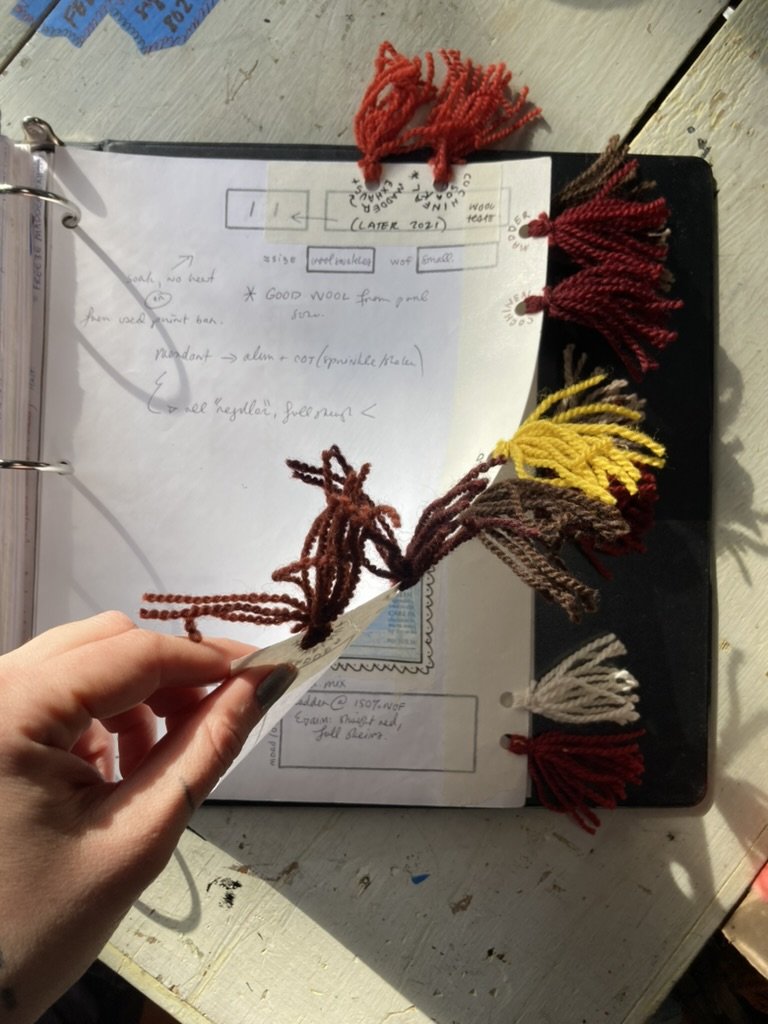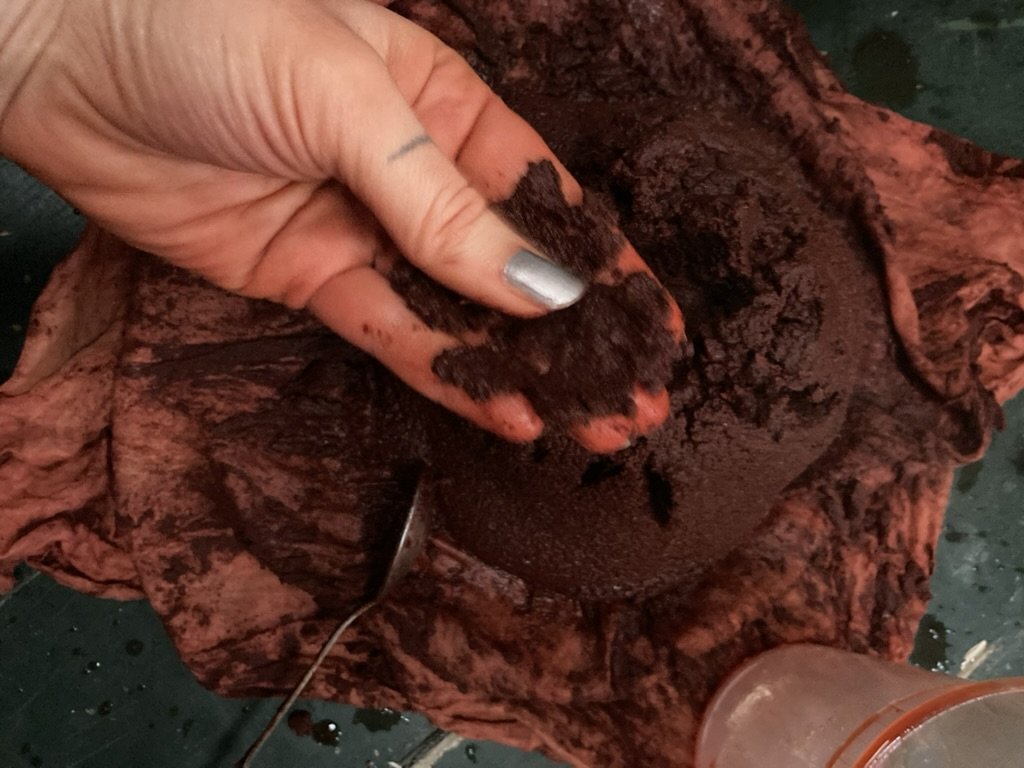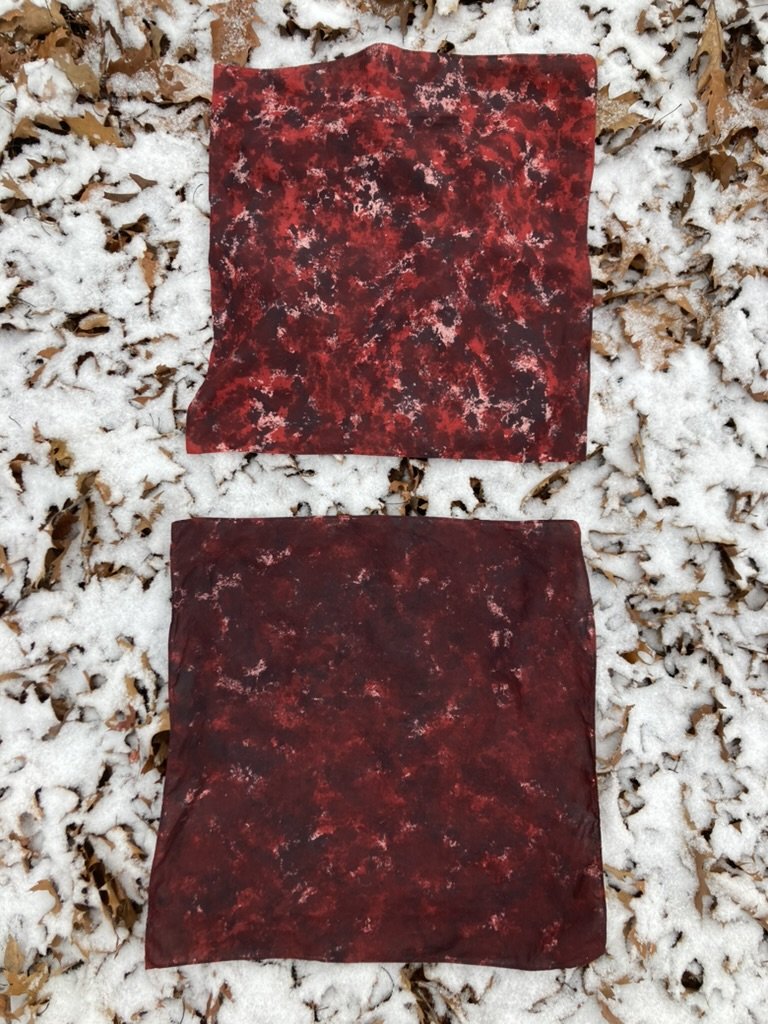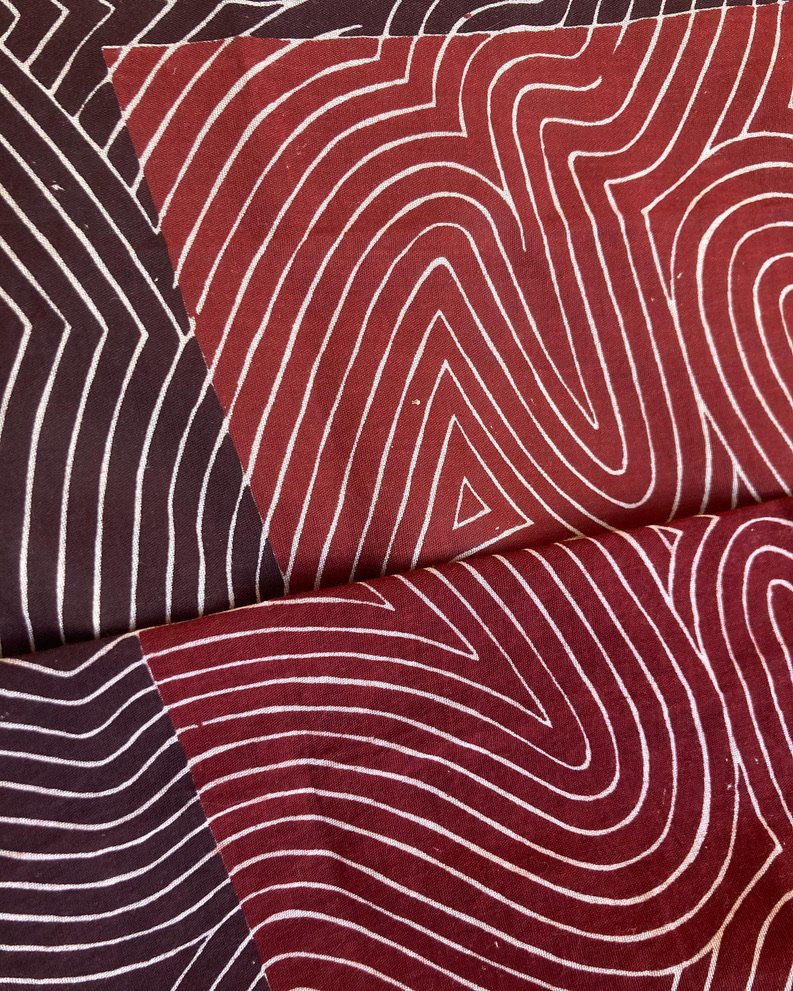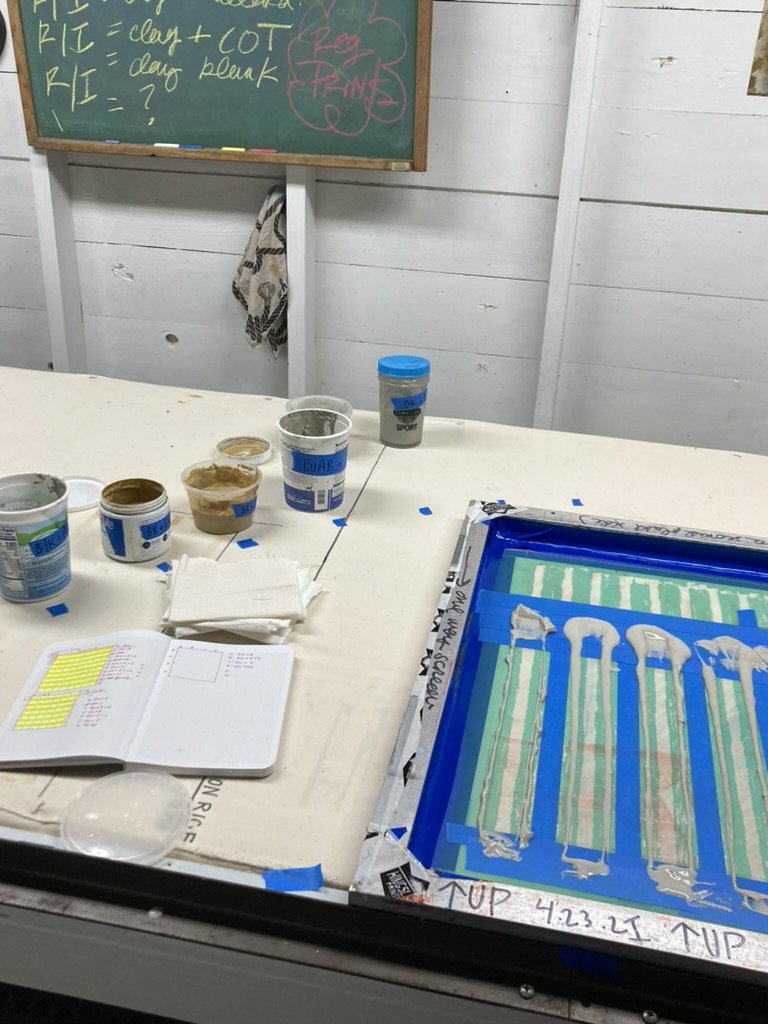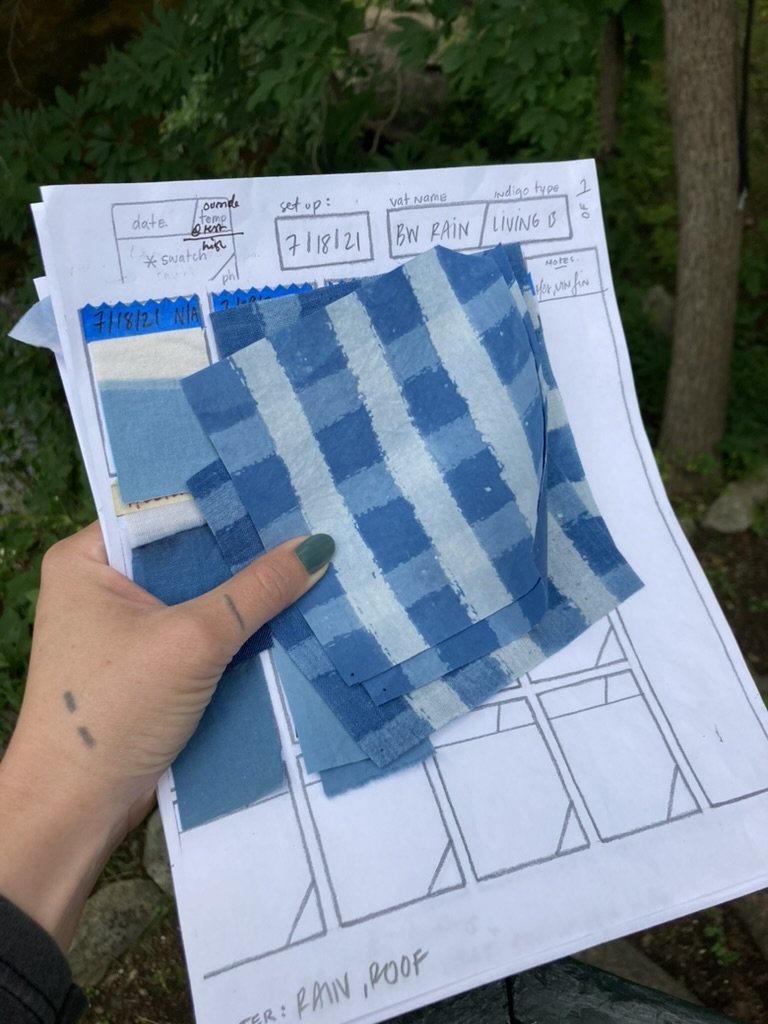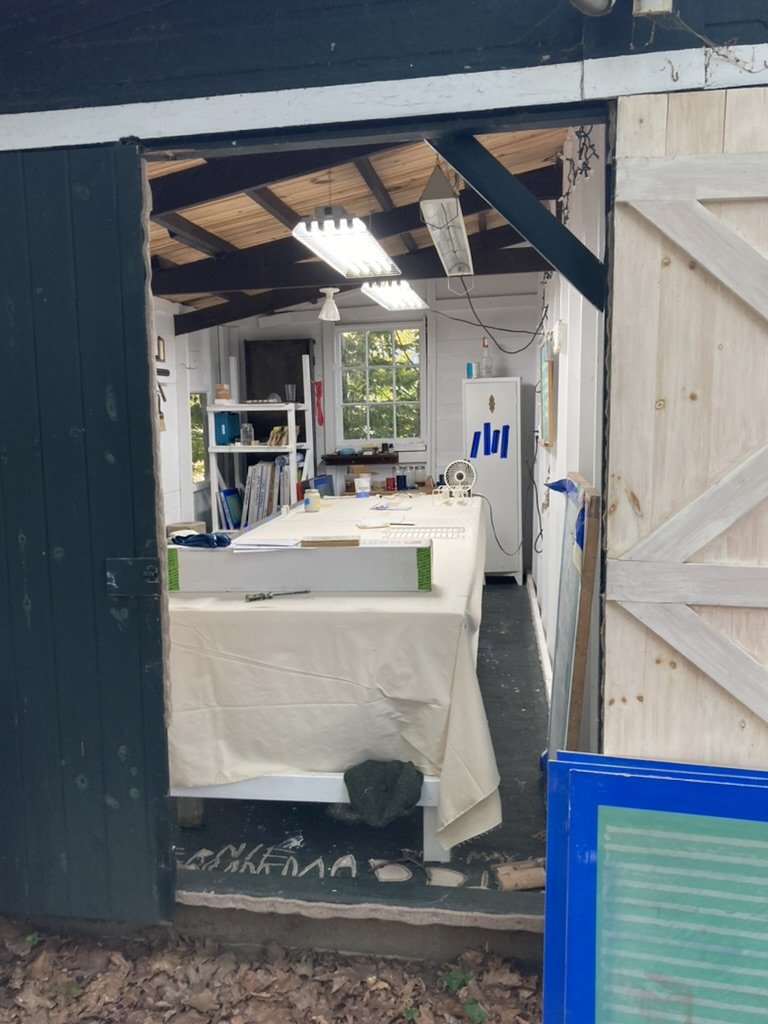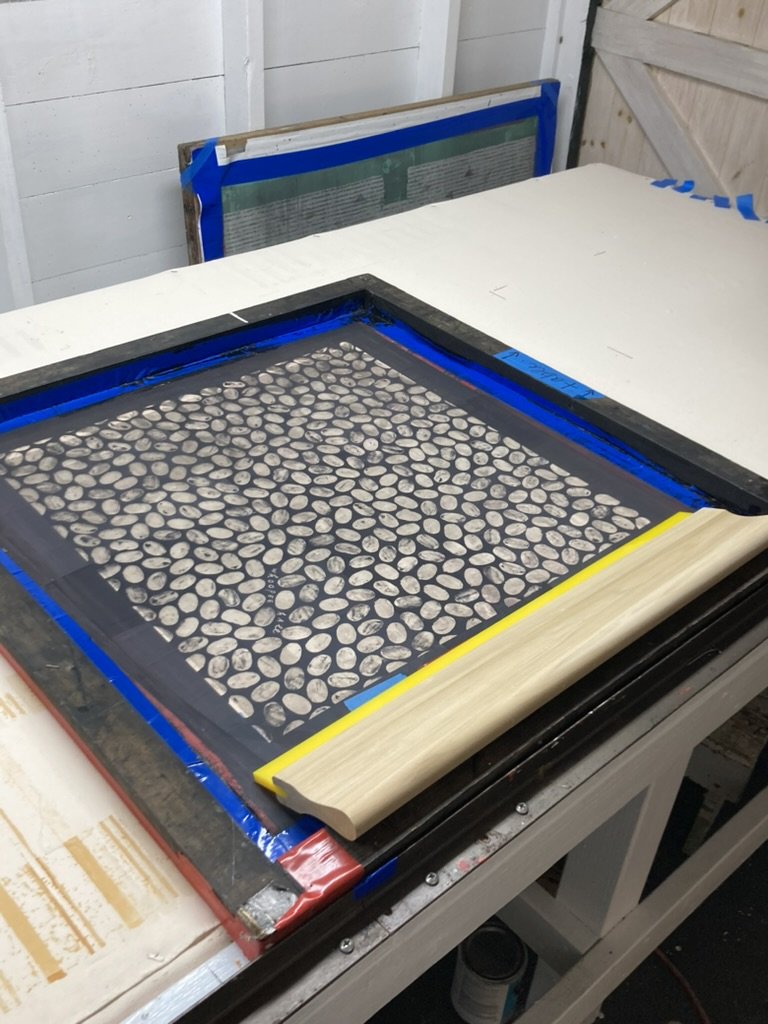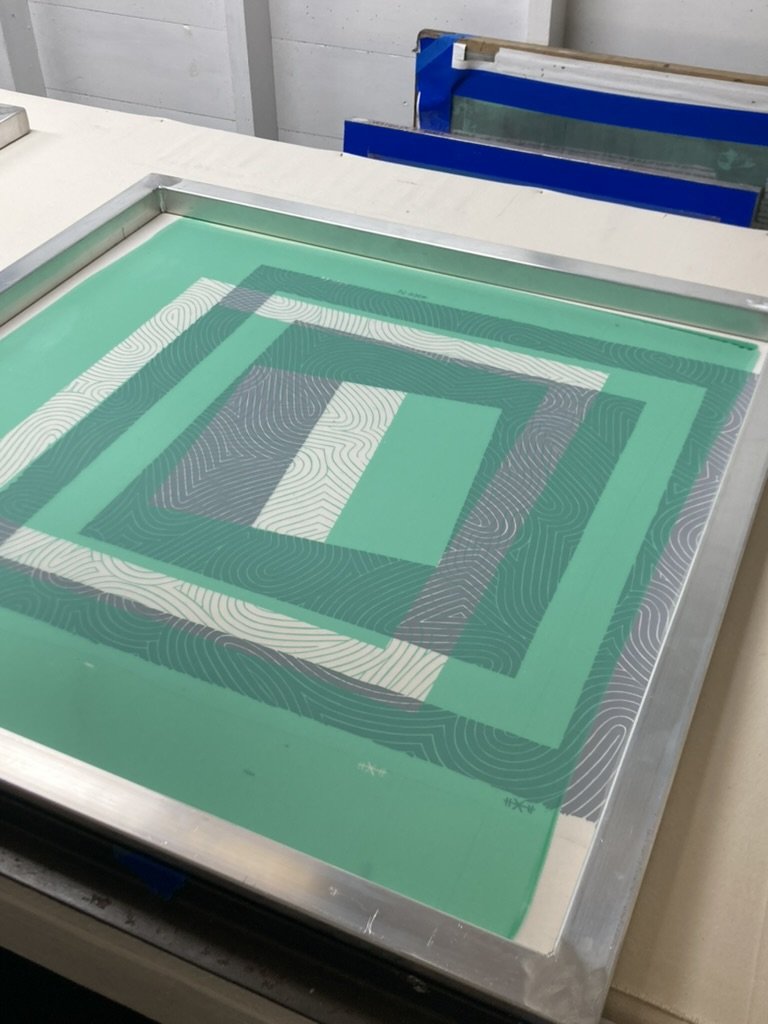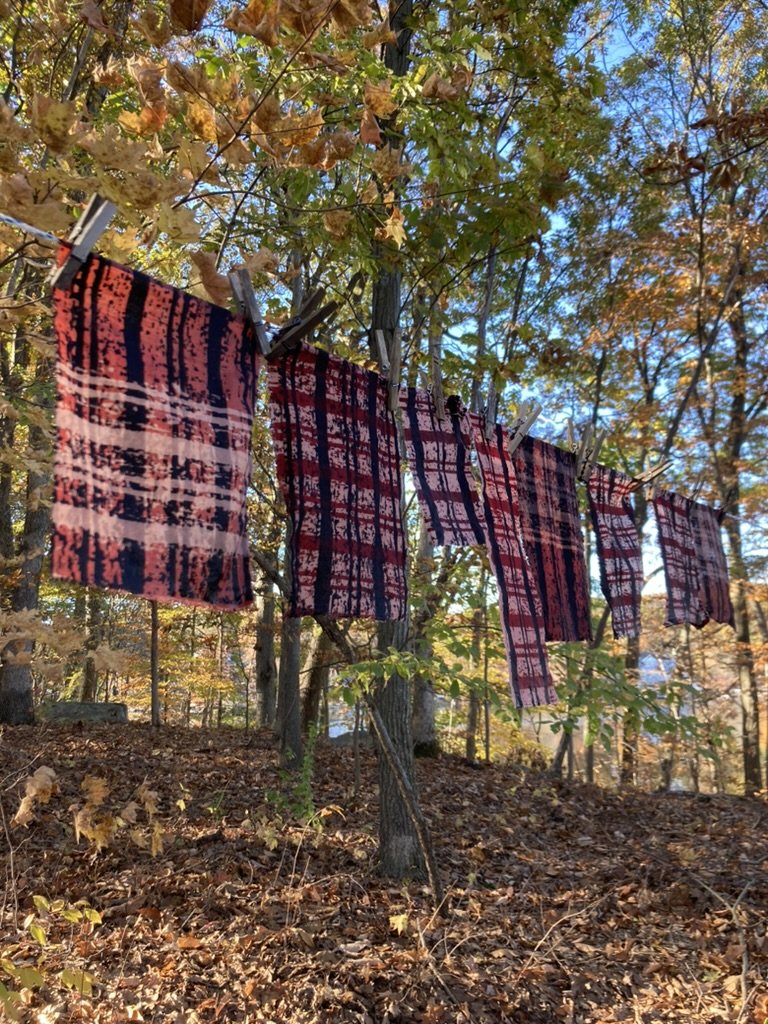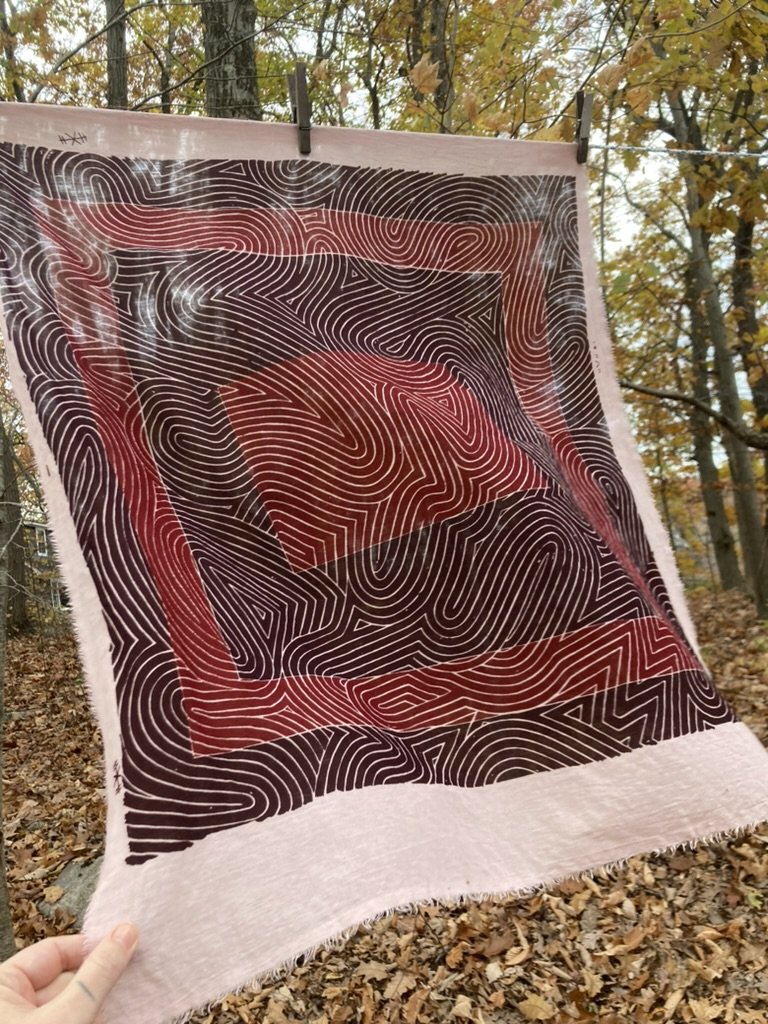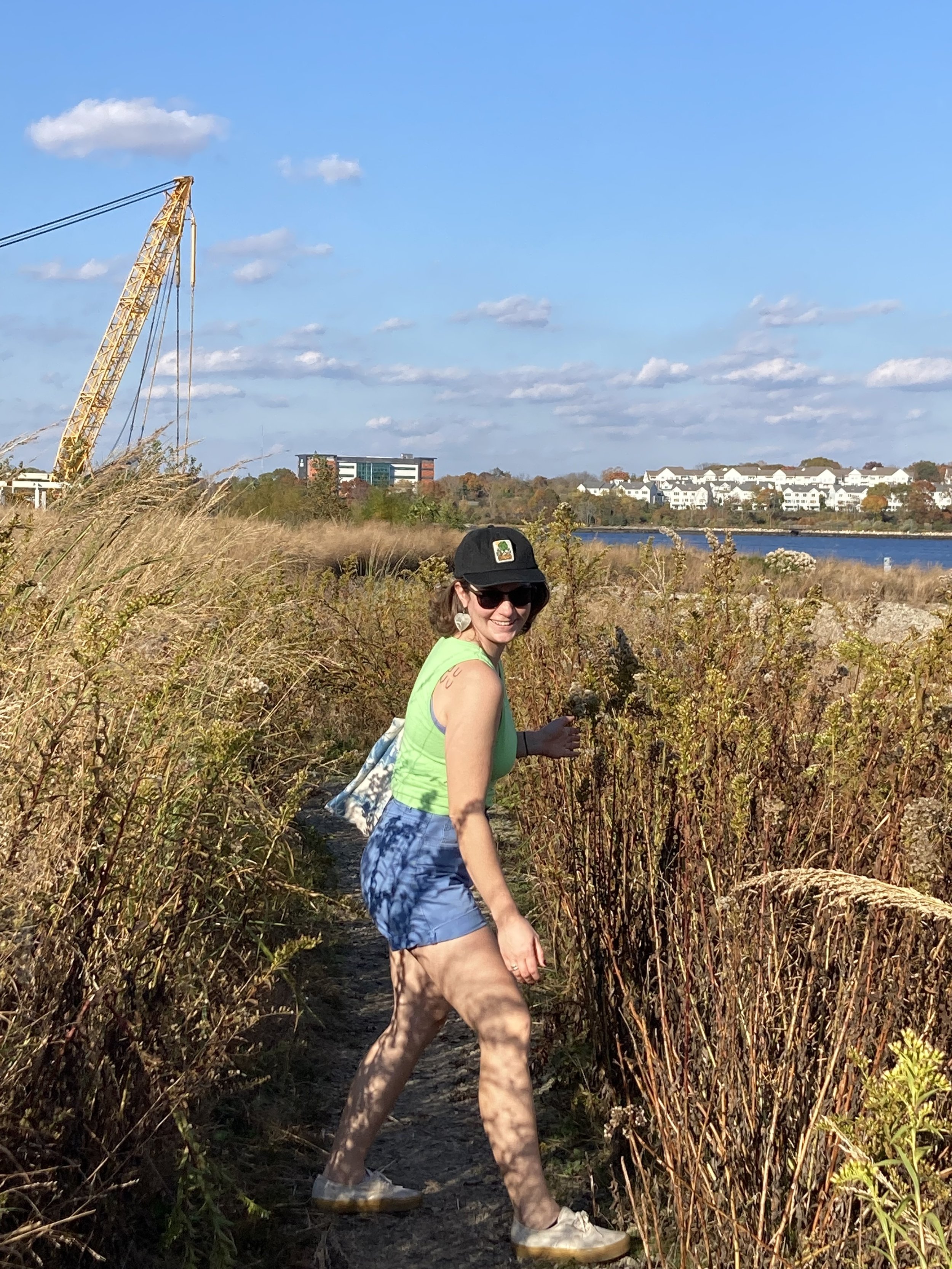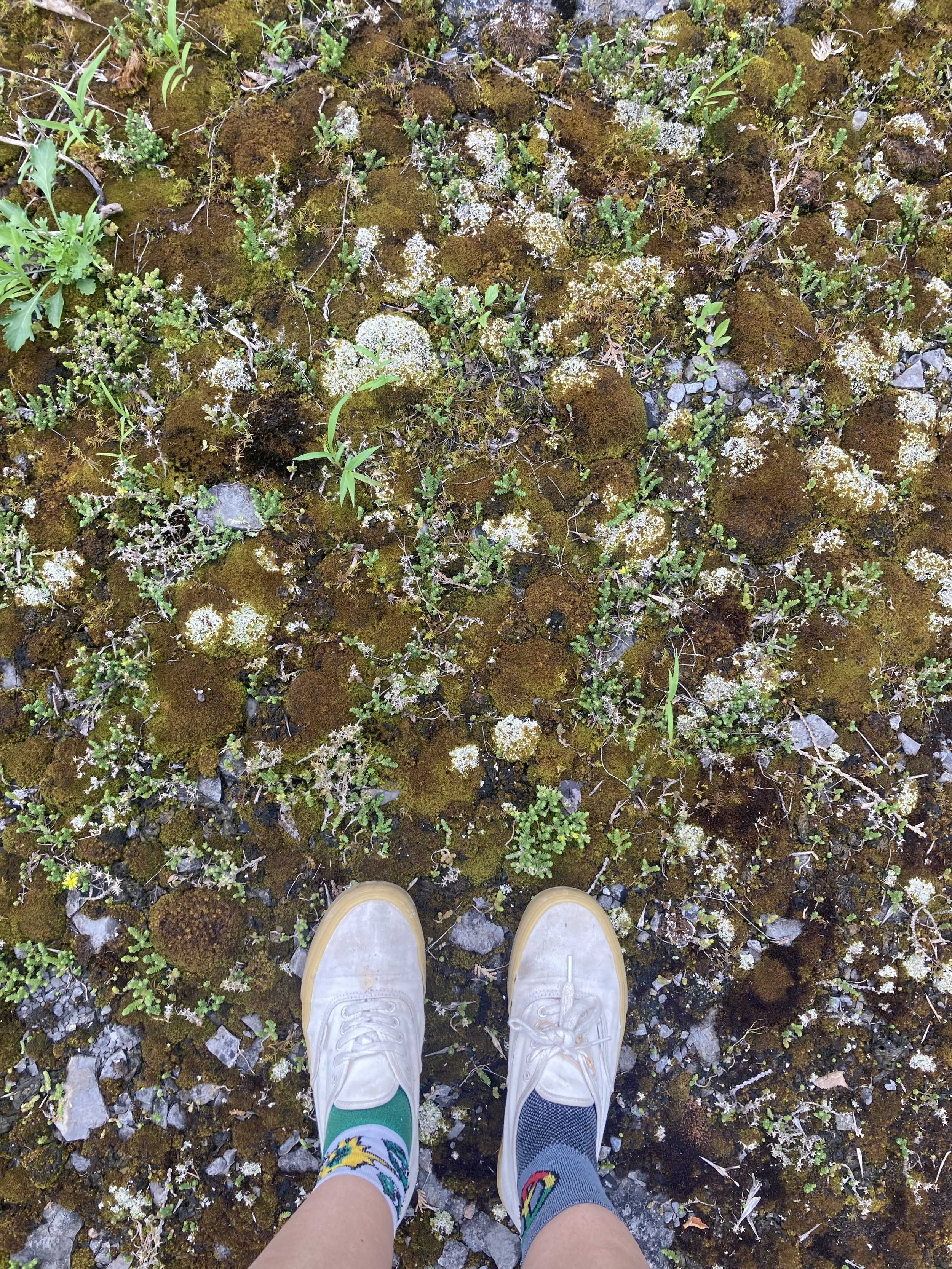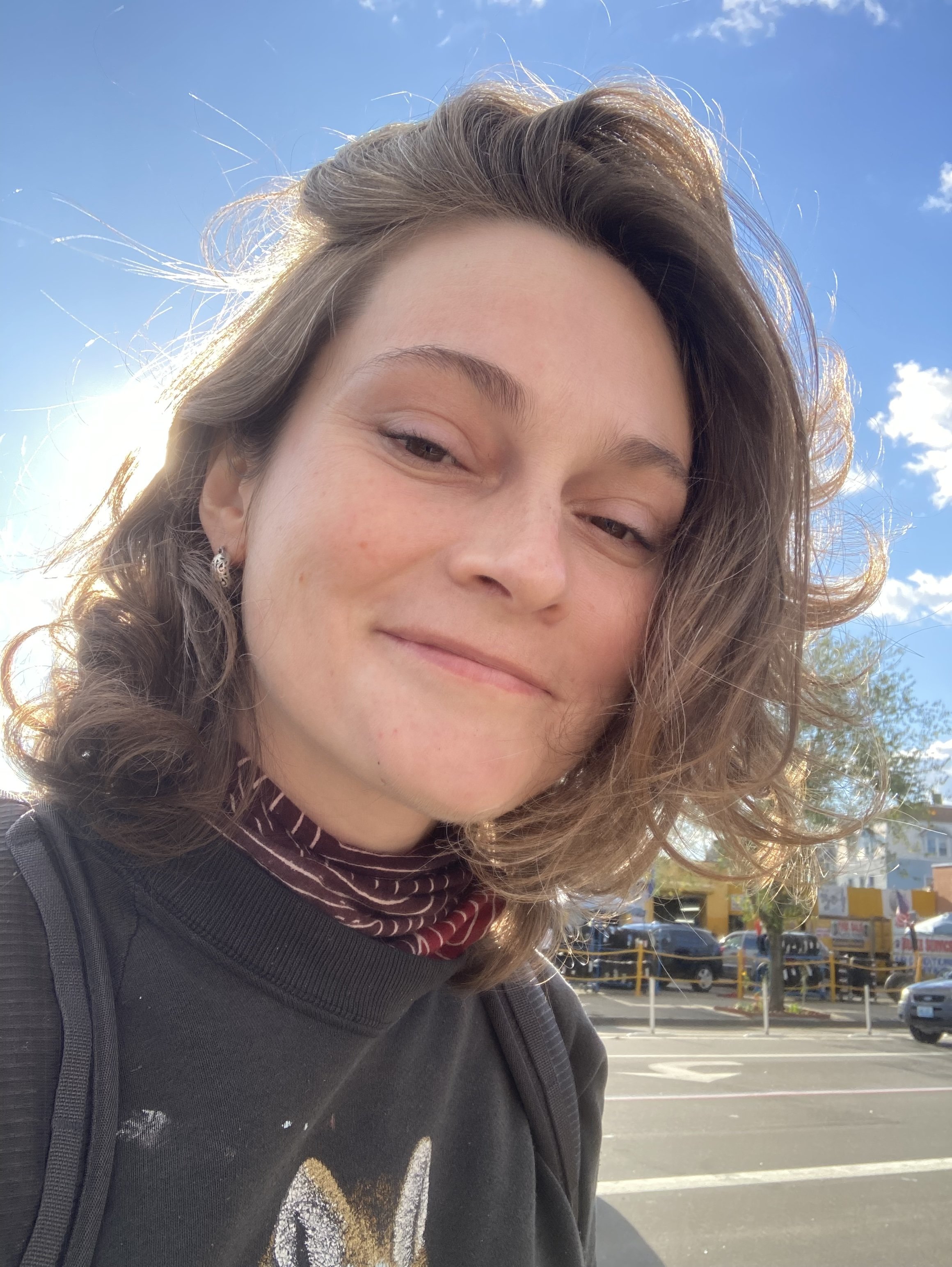Cold and Deadly is a project investigating natural dye print processes with the goal of designing a modern system for production textile printing that is circular and climate beneficial. Currently, the project focuses on researching and testing traditional methods of printing with dyes known to be light- and wash-fast. Historically, printers and dyers used these techniques to produce permanent, vibrant, multi-color prints on textile yardage, using woodblocks, engraved rollers, stenciling, and hand painting. The Cold and Deadly system will be built around silk screen printing–the most common modern method for commercial textile printing. Historical documents, scientific papers, input from members of the modern natural dye community, and rigorous testing drive the research for the project; the resulting processes are a mix of modern dyers’ processes, historical industrial practices, and discoveries that evolve naturally during testing.
Plaid is the main testing pattern in use. The even stripe motif allows multiple colors or techniques to be printed in tandem, providing information about color overlays and the combination of thick stripes surrounded by visual noise offers provides information about both flats and details. Plaid also removes the inevitable bias that would come with using images from personal work, producing tests that cannot highlight individual colors or imagery that distracts from unbiased analysis. White space in the design is perfect for printed reference labels.
The tests are done in line with simple scientific process, with controls and single variables. Each test is labeled and logged, with a corresponding worksheet for record keeping. Water effects the process the most out of any variable and has been the most difficult ingredient to source. You can see amongst the process photos below that snow is sometimes used as a source of good water, but rainfall was the best water source available until the move to Rhode Island. The New Jersey studio was connected to a well in an area with very hard water, which produced terrible and unreliable outcomes across the board.
Where the project is now in Providence, the water coming out of the tap is very good for testing, as evidenced by the tests in the grid above, bottom right square, with “XX” representing a water test, and “=” representing a control set processed with distilled water. Hard water produces noticeably tinted back grounds and very poor printed color retention.
The name Cold and Deadly comes from a treatise on small-scale industrial dyeing written by Elija Bemiss in 1815. As was common at the time, he describes his materials through their perceived characteristics, inferring their preferred use in those terms. Thus, he deems cotton and silk to be “of a cold and deadly nature,” inferring both dye best in cold processes only (an inference that is arguably almost entirely incorrect.)
In part, Cold and Deadly is a nod to historical natural dye systems and their passionate creators, as well as an acknowledgment of the current state of global textile manufacture, which is nothing if not deadly—for garment workers, for our planet—and devoid of any feeling of community or conscience. Cold and Deadly is founded on the belief that natural dyes present a unique opportunity to create a circular system for textile printing, specifically for smaller production studios that operate as an integral part of local economies and Fibersheds.
The project is run by Madeleine McGarrity. She graduated from Rhode Island School of Design with a BFA in Printmaking, and worked as a printmaking teacher and professional textile printer in Brooklyn, NY from 2012 to 2020. Cold and Deadly began in 2019 in a rural New Jersey studio, originating from a desire to use natural dyes in her own fine art print work. She recently relocated to Providence, RI, and works for the Rhode Island School of Design as the Surface Technician for the Textiles Department. In the rest of her time, Madeleine sustains a studio art practice, is an avid outdoors person, bike commuter and gardener.
